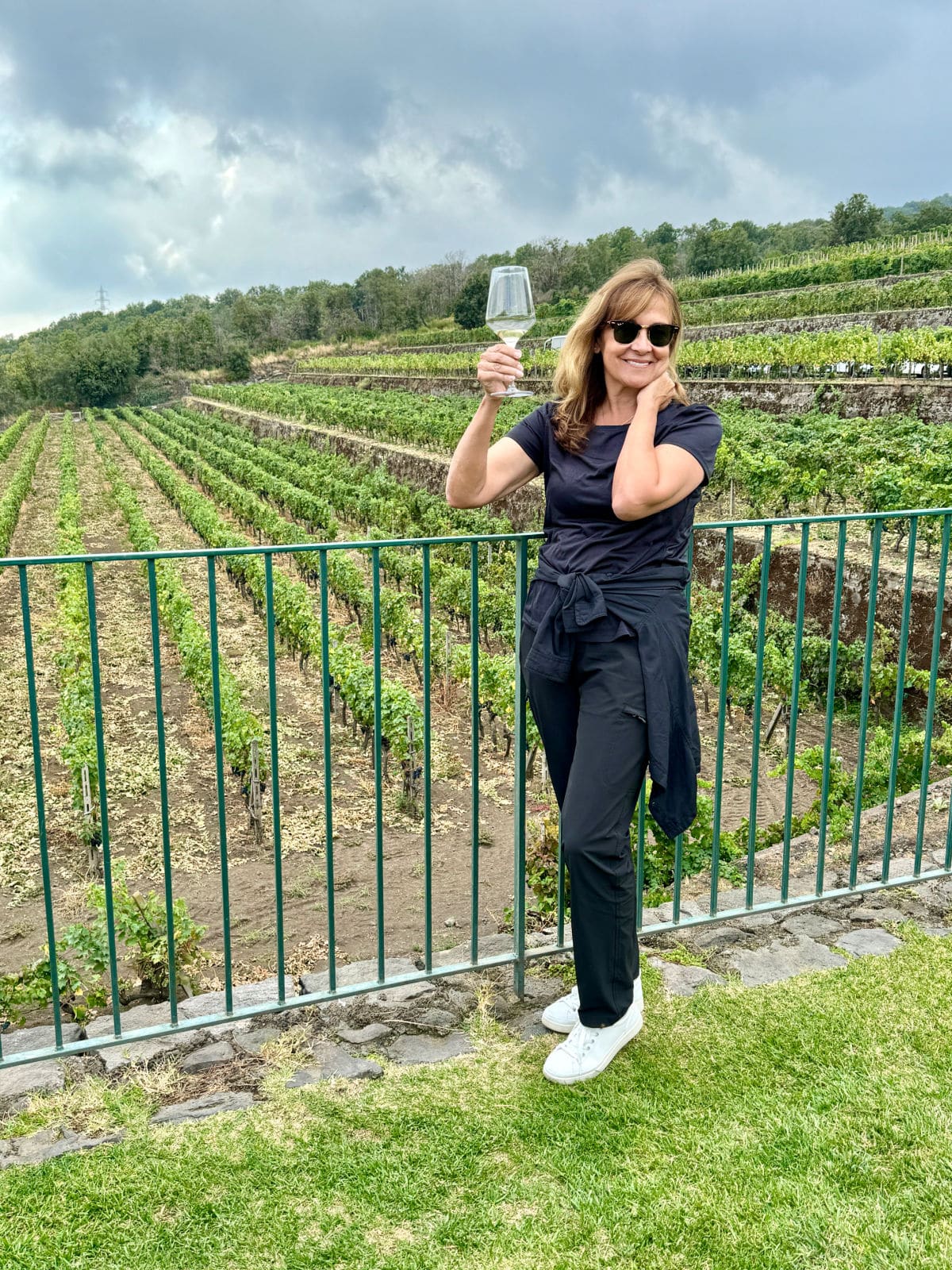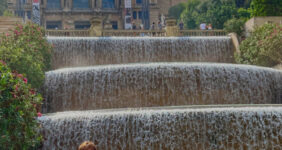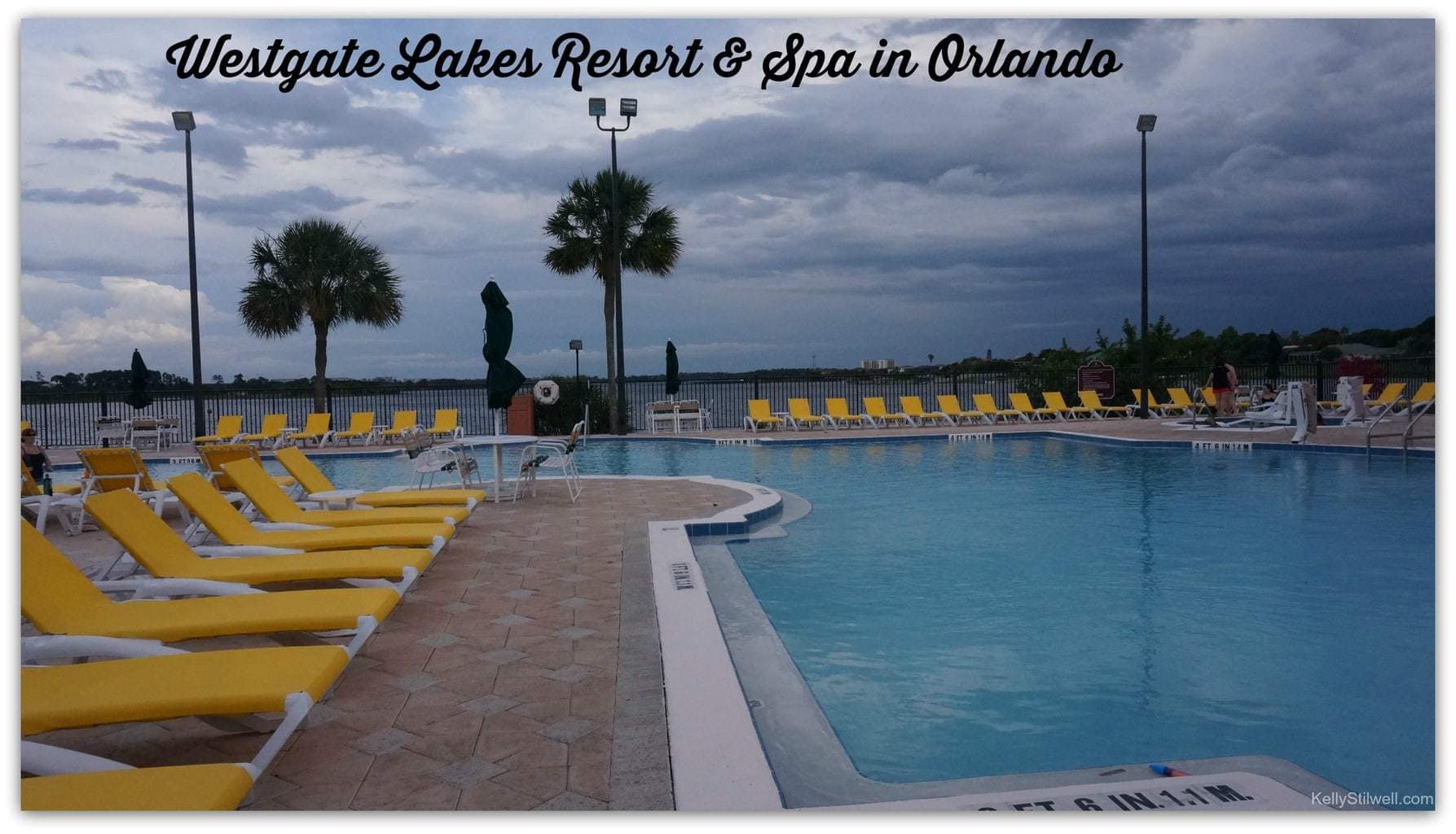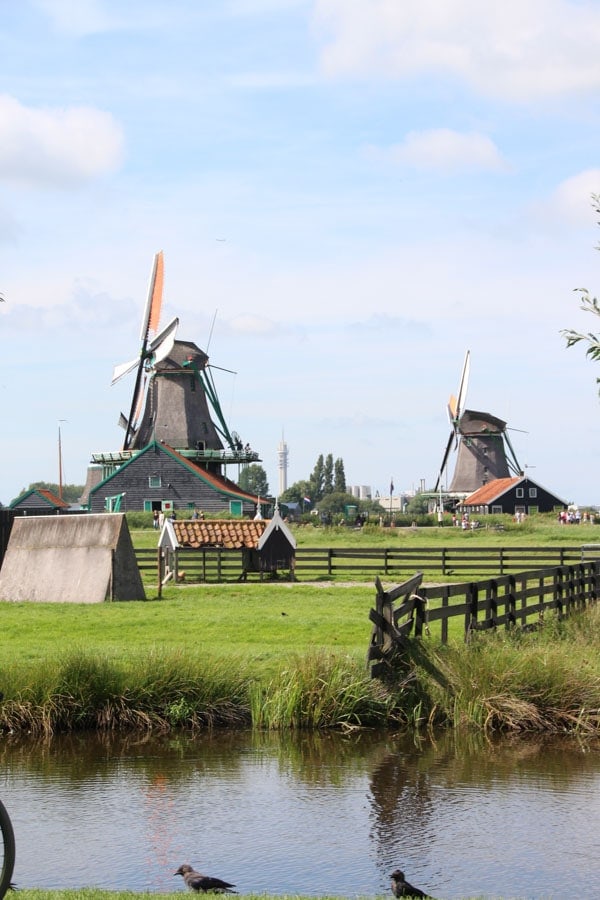22 Famous Landmarks in Barcelona
You would be surprised at how many famous landmarks in Barcelona you can see in just a few days. As many people embark or disembark in Barcelona on a cruise as I did, I thought it would be helpful to share our highlights from this charming city rich in history, art, and food.
👉 Don’t have time to read the whole article? Here are my top tips!
🗺️ This Barcelona In 1 Day Guided Tour will take you to Sagrada Familia, Park Guell, and Old Town, and is perfect for first time travelers.
🍷 For something more relaxed, try this Montserrat Half-Day Tour with Tapas and Gourmet Wines (With an optional golf round!)
🛏️ Find affordable Barcelona Hotels.
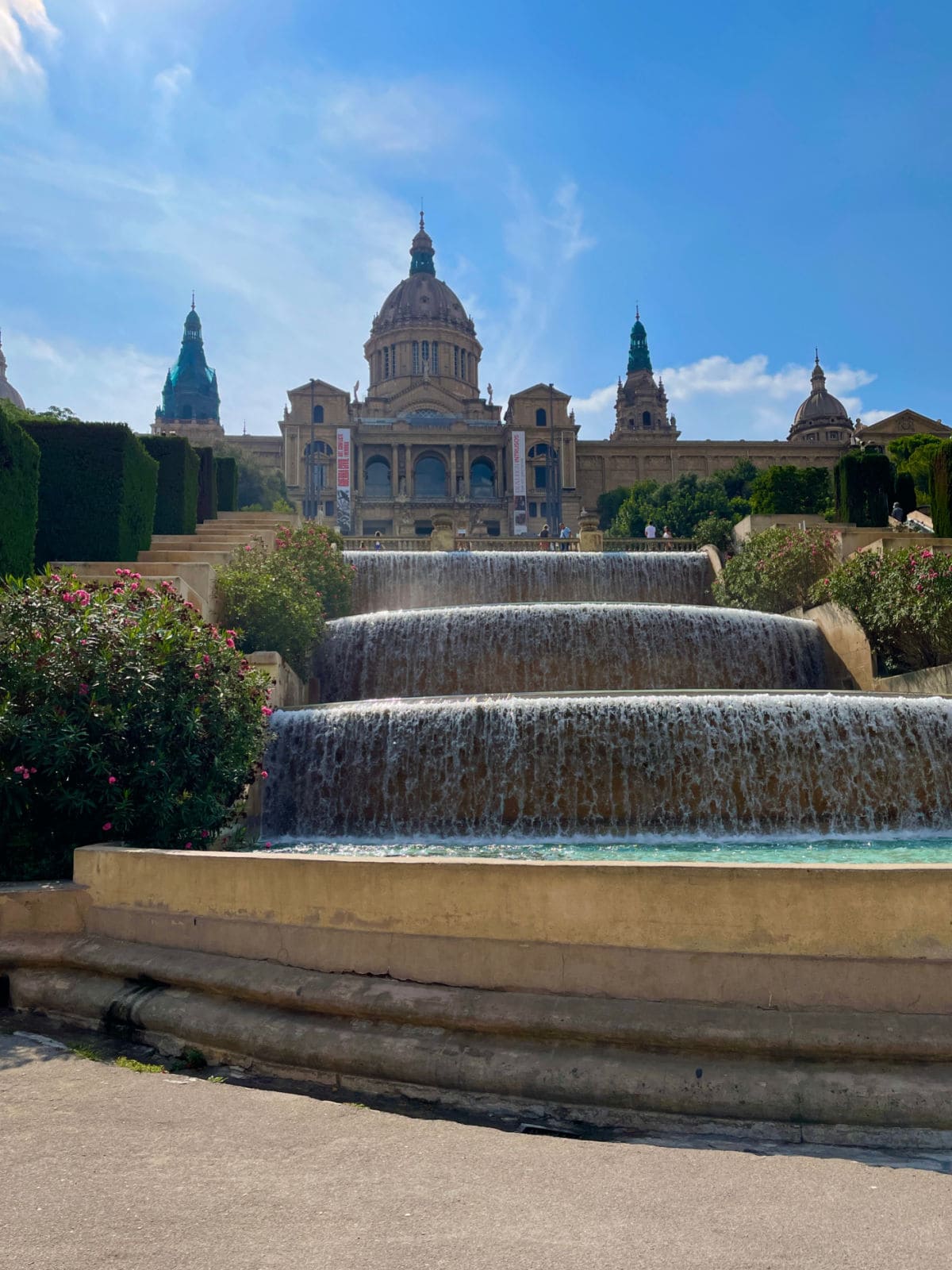
Barcelona is a large city and is actually the second largest in Spain after Madrid. It is among the oldest cities in modern European civilization and is home to over 1.6 million Spaniards.
The city hosts a wide variety of stunning sights such as Romanesque churches, gothic quarters, and artistic treasures from artists such as Pablo Picasso. If you’ve been thinking about a cruise that includes Barcelona, check out the Costa Smeralda Mediterranean cruise which begins in Barcelona and ends in Rome.
And if you’re wondering about other countries you could easily visit while in Spain, Morocco is just over two hours flying time, and you’d not only be in another country but on another continent! It’s been on my bucket list for a while now after reading this Morocco travel guide.
Table of Contents
What to See in Barcelona
Being a host to many famous landmarks, anyone who visits Barcelona should make a point of seeing at least half of them, and you can easily do that in a day. Seven of the famous architectural landmarks in Barcelona designed by Antoni Gaudí, the famous Catalan architect, have been declared UNESCO World Heritage Sites.
Whether you see the city on foot, by Hop On Hop Off bus, or drive on your own, there is much to see!
The Ramblas
The Ramblas, popularly known as La Rambla, is one of the first historical landmarks most tourists visit in Barcelona. It is a truly impressive 1.2-kilometer boulevard, joining Port Vell’s Christopher Columbus Monument with Plaḉa de Catalunya.
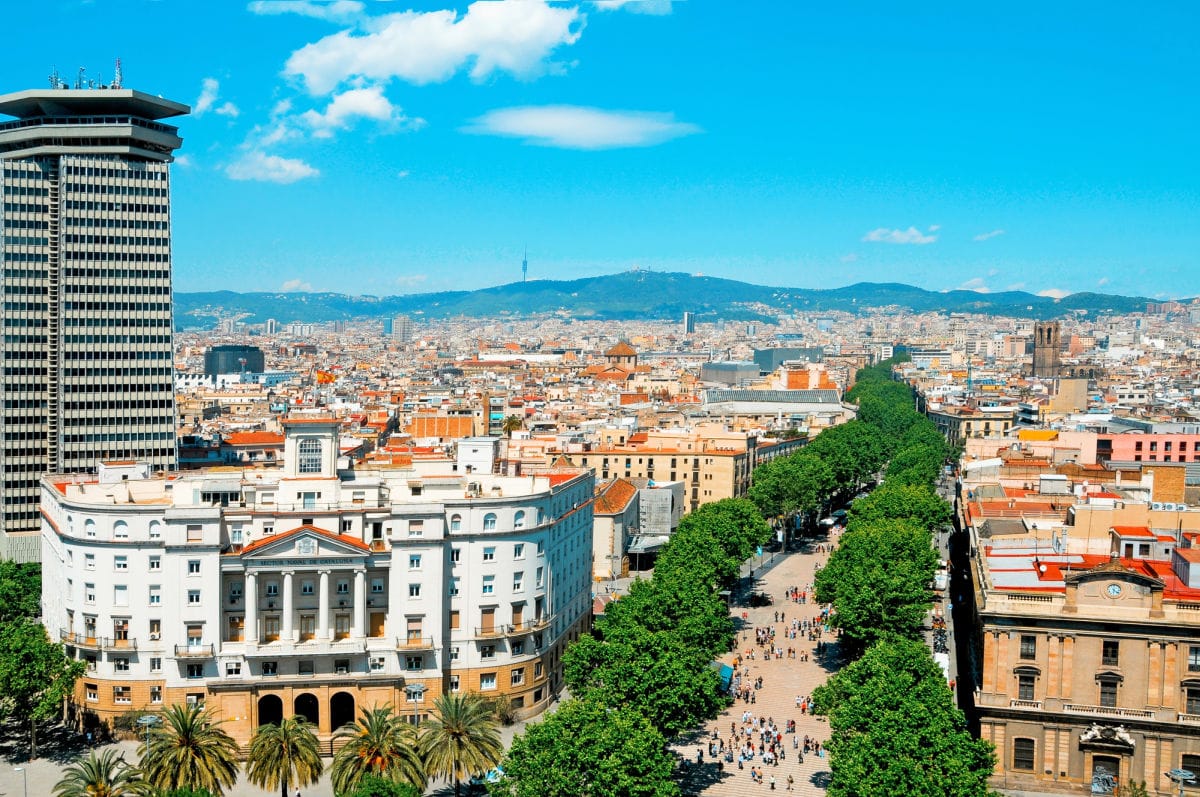
Believe it or not, this incredibly attractive street was a sewer back in the Middle Ages! It was later diverted and completely covered up, leading to the street’s emergence. It has developed over the years into a beautiful and bustling tourist attraction.
La Rambla is known for its performance art, ranging from awesome street performers, to human statues and artistic portrait drawings. The local shops and eateries (Market La Boqueria) boast great Barcelonian foods and fresh fruits, and you can see the phenomenal Christopher Columbus Monument along the way.
Market La Boqueria
Right at the center of Las Ramblas is the most famous public market in Barcelona, La Boqueria. This major tourist attraction dates back to the late Middle Ages and offers many foods, fruits, drinks, and other goods.
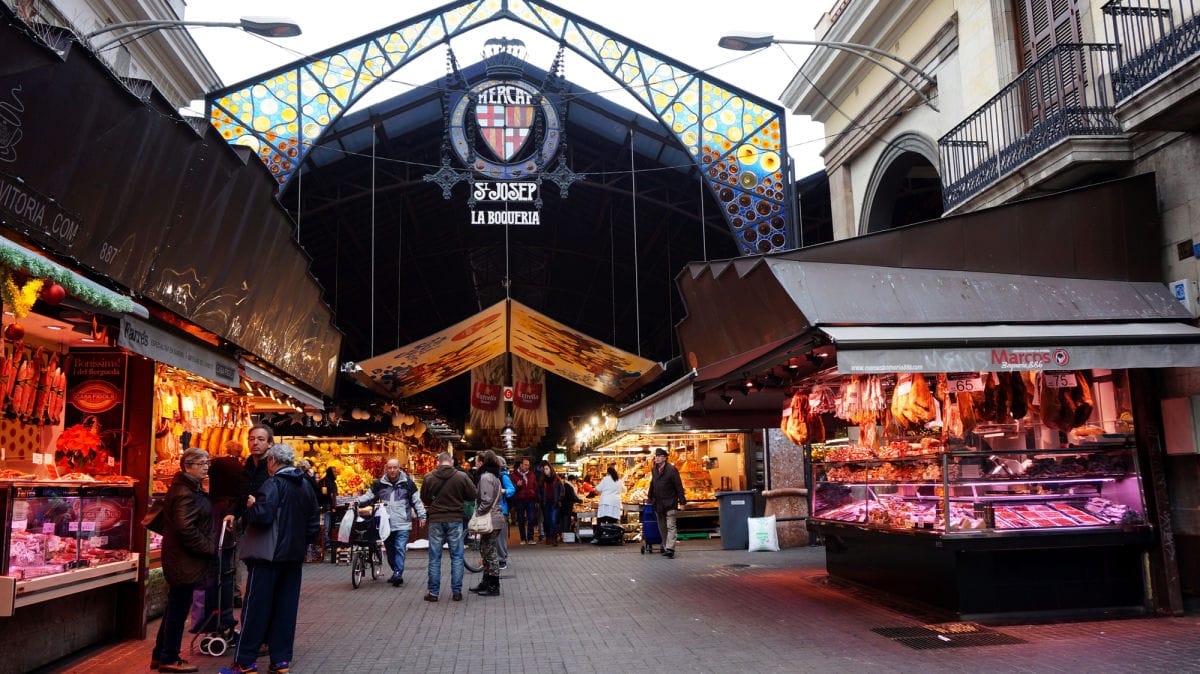
When you’re in Barcelona, stop by Market La Boqueria from 8 a.m. to 8:30 p.m., Monday through Saturday to enjoy great Spanish foods, drinks, and culture. You can find the Market La Boqueria at Rambla, 91 08001 Barcelona.
Park Güell
The next famous landmark you ought to see when you visit Barcelona is Park Güell, another UNESCO World Heritage Site. This private Park, situated in La Salut on Carmel Hill, features magnificent architectural designs and artistic gardens and attracts thousands of tourists daily.
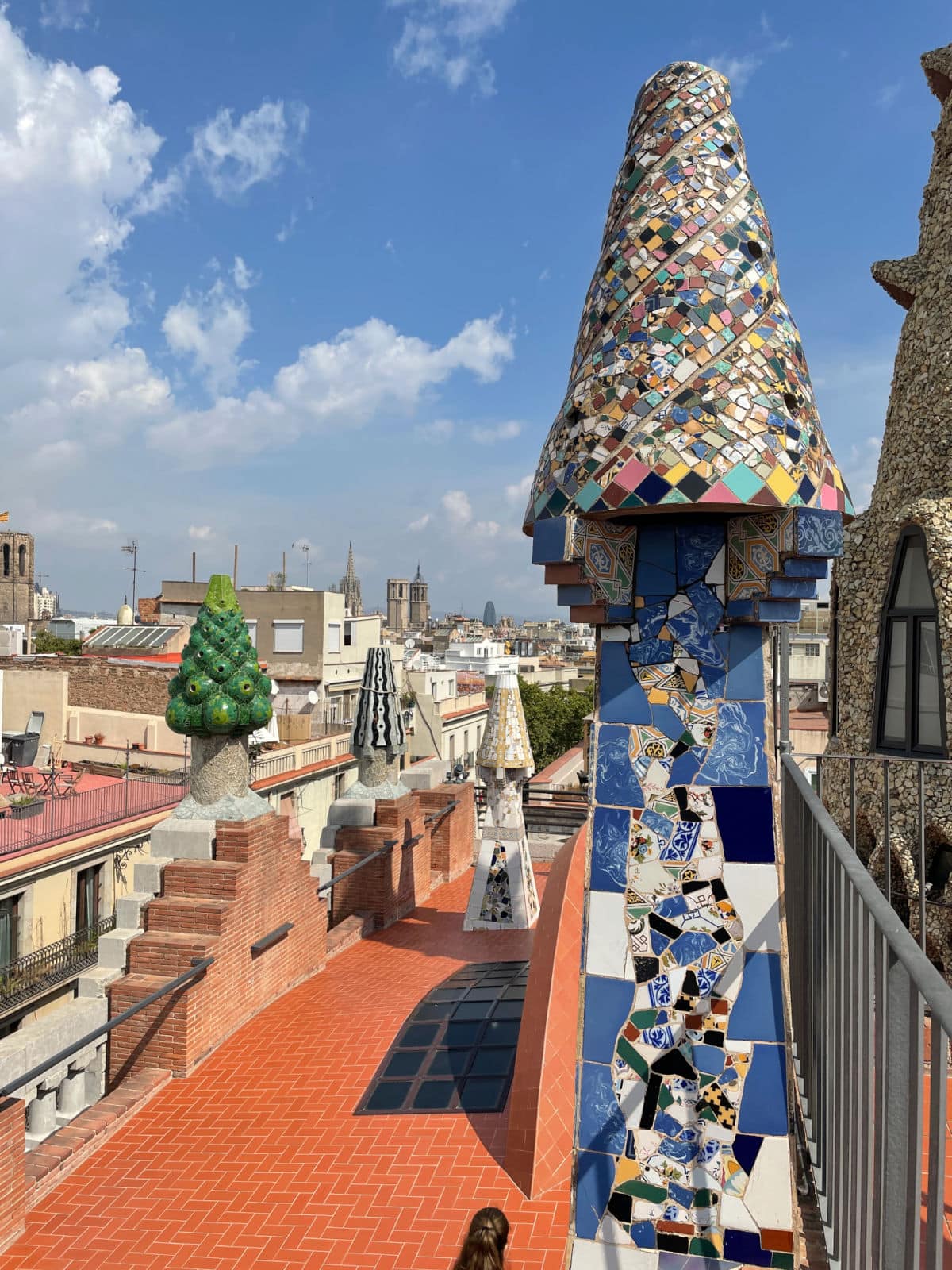
Park Güell was designed and built by the architect Antoni Gaudí between 1900 to 1914, as commissioned by Eusebi Güell, an art patron at the time. Güell intended to replicate British residential parks, hence the English name.
Gaudí moved into the Park with his family in 1906, and lived there until his death in 1926, the same year the Park opened to the public. It was later declared a UNESCO World Heritage Site in 1984 in honor of Antoni Gaudí.
You can access the Park by visiting Carrer d’Olot, 7 08024 Barcelona, Spain. The Park typically opens daily at 9:30 a.m. and closes at 9:30 p.m., though times may differ. Get your admission tickets ahead of time so you don’t need to mess with it there. The park is open all year round.
Casa Batlló
Another famous site you absolutely need to visit in Barcelona is Casa Batlló, or the House of Bones. This is one of Gaudí’s famous Modernism architectural masterpieces and was an artistic remodeling of an existing home.
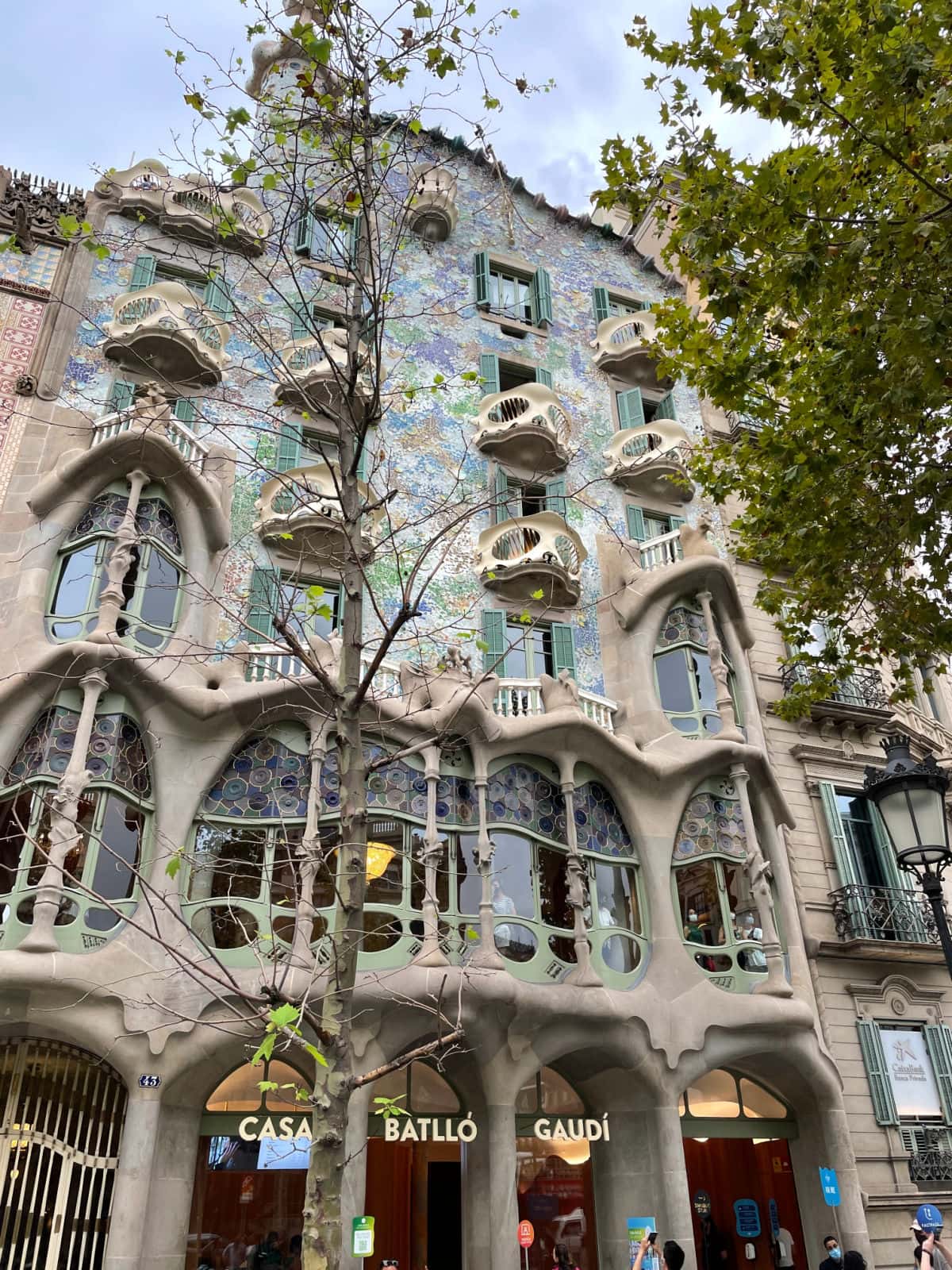
Casa Batlló is located in Passeig de Gràcia, which is at the center of Barcelona. The house was originally owned by the Industrialist Josep Batlló and his family. Batlló wanted an iconic and unique house design, which led him to hire Gaudí to redesign it.
The final design is described as having an almost “skeletal” quality, leading to its local name being House of Bones, or Casa dels ossos.
You can visit Casa Battló at Pg. de Gràcia, 43, L’Eixample, 08007. It is open from 8:30 a.m. to 8 p.m. every day. Learn more about Casa Battló and book tickets for a guided tour so you can be sure to get in.
Sagrada Familia
Basílica i Temple Expiatori de la Sagrada Família, better known as Sagrada Familia, is a huge unfinished Roman Catholic basilica that you must see when you visit Barcelona. Although construction began in 1882 under a different architect, the building was designed by Antoni Gaudí after he took over in 1883.
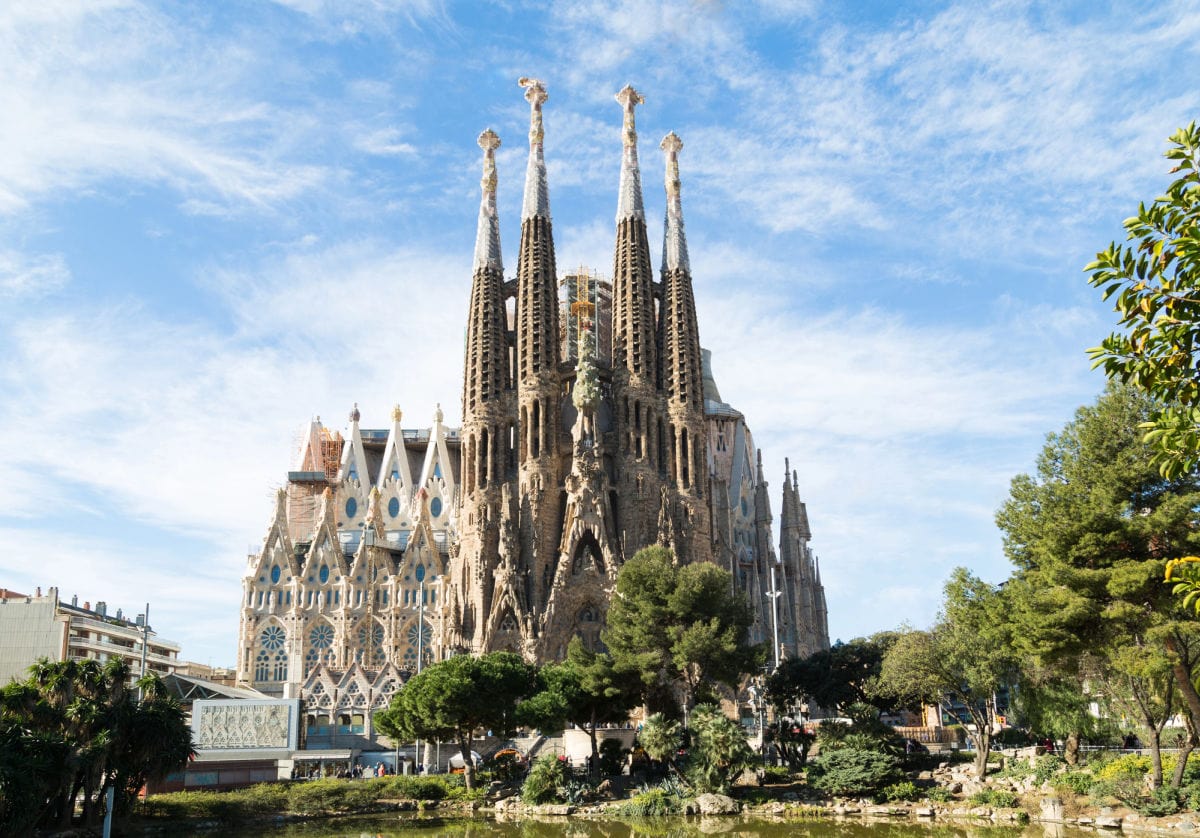
Gaudi devoted his life to designing the building but died before its completion. His works on the basilica are now considered as part of the UNESCO World Heritage Site.
You can view this beautiful church from outside and attend mass on Sunday mornings, but please be considerate of those participating.
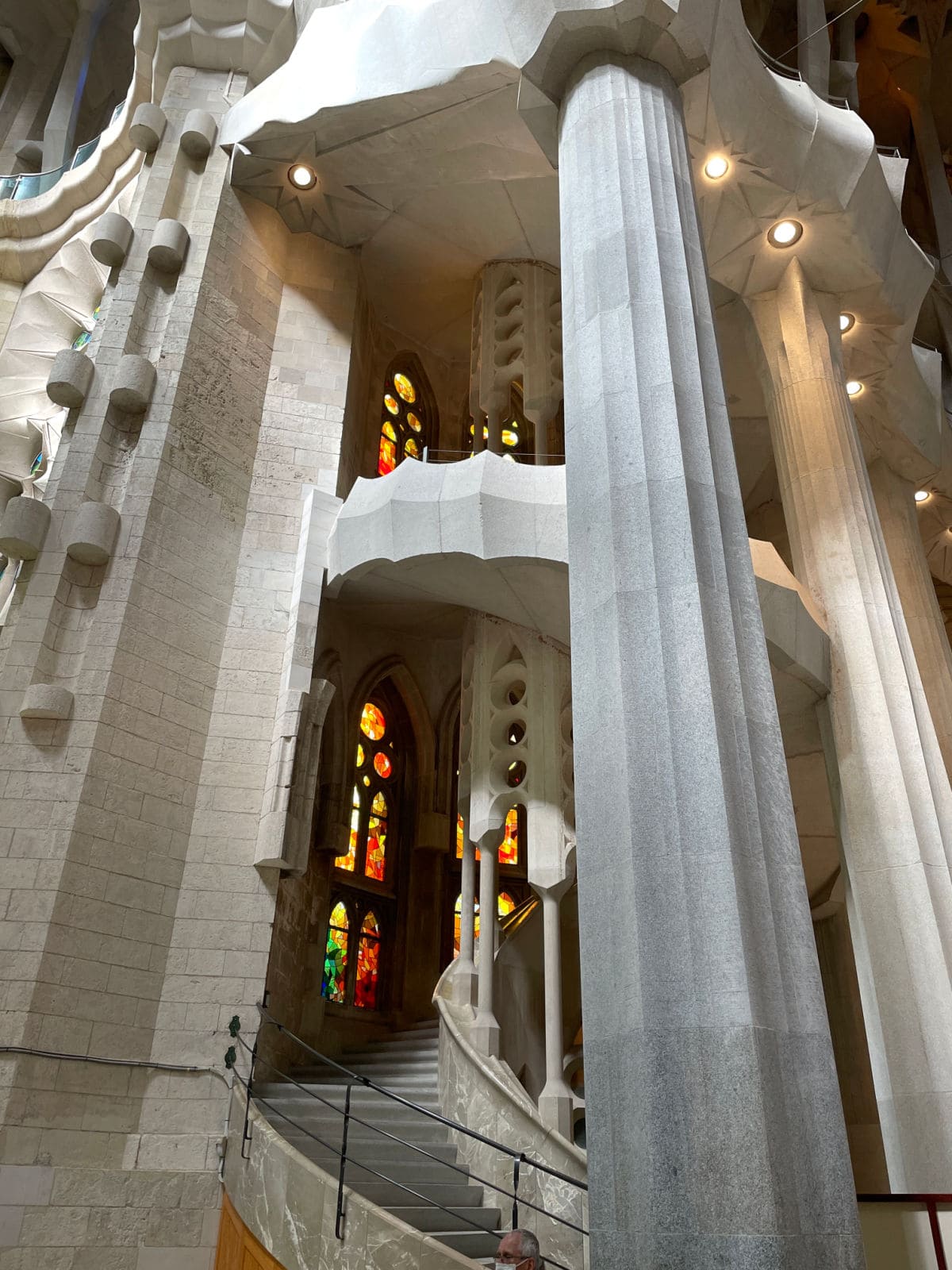
To visit the Crypt (where Gaudi was buried), the Museum, the Nave, the Passion, and the Nativity steeples, you will need an entrance ticket.
It is suggested to escape the lines during tourist season, by getting your ticket in advance. You can also visit the website to learn more about the history of the monument.
Barcelona Cathedral
The Cathedral of the Holy Cross and Saint Eulalia, commonly known as the Barcelona Cathedral, is a gigantic church towering over the district of Barri Gótic. Constructed between the late 13th century and the mid-15th Century, the marvelous design included a medieval interior, gold finishing, a state-of-the-art altar, and 140 saint statues.
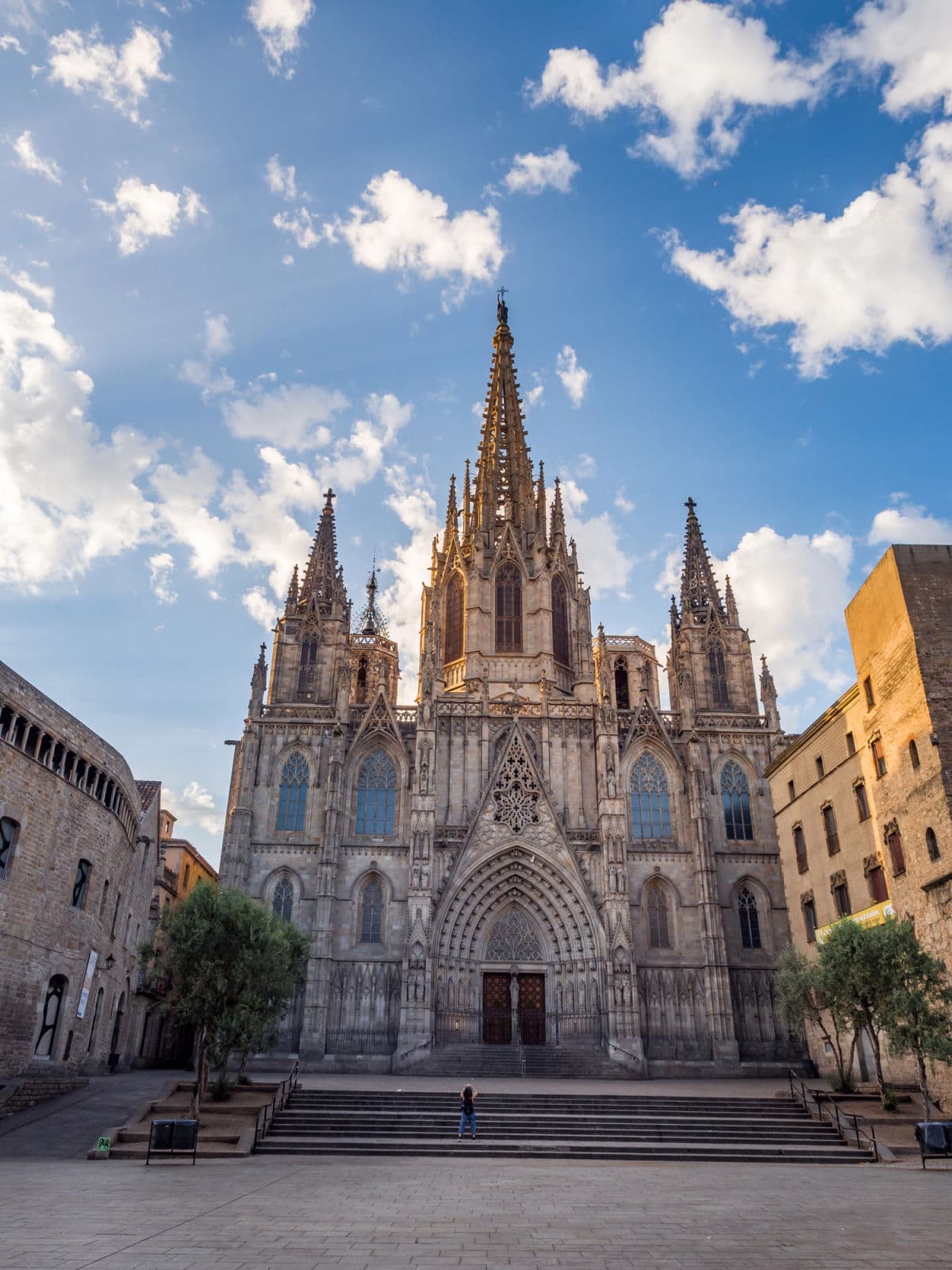
Many visitors describe the cathedral as a majestic site, even in comparison to other classic European churches. The Barcelona Cathedral, located in Pla de Seu, 08002, is open to visitors Monday through Friday from 9:30 a.m. to 6:30 p.m., Saturday from 9:30 a.m. to 5:15 p.m., and Sunday from 9 a.m. to 5 p.m.
Getting your guided tour ticket ahead of time saves you from waiting in lines. There are varying times when you can see parts of the Cathedral for free, so check your guidebook or the website. (Note: I love this small guidebook by Rick Steves.)
Monument to the Martyrs of Independence
The monument to the Martyrs of Independence is a monumental structure in Barcelona, commemorating eight heroes who were killed in 1809 after failing to overthrow the occupying French troops during the Peninsula War.
Josep Llimona constructed it as a symbol of Spain’s past struggles for independence and the sovereignty of their land. The monument is set on the street near the Church of Sant Severo and is directly opposite the Barcelona Cathedral’s gateway. You can visit it at any time at Carrer del Bisbe, 10, Ciutat Vella, 08002.
Santa Maria del Mar
Many people think that once they’ve seen one example of Gothic architecture, with its trademark pointed arches and classic proportions, they’ve seen all the style has to offer.
But the Basílica de Santa Maria del Mar is truly unique, and the sole remnant of pure Catalan Gothic design. The appearance of historical stained-glass windows and symmetrical medieval architecture leaves a lasting impression that attracts tourists year after year.
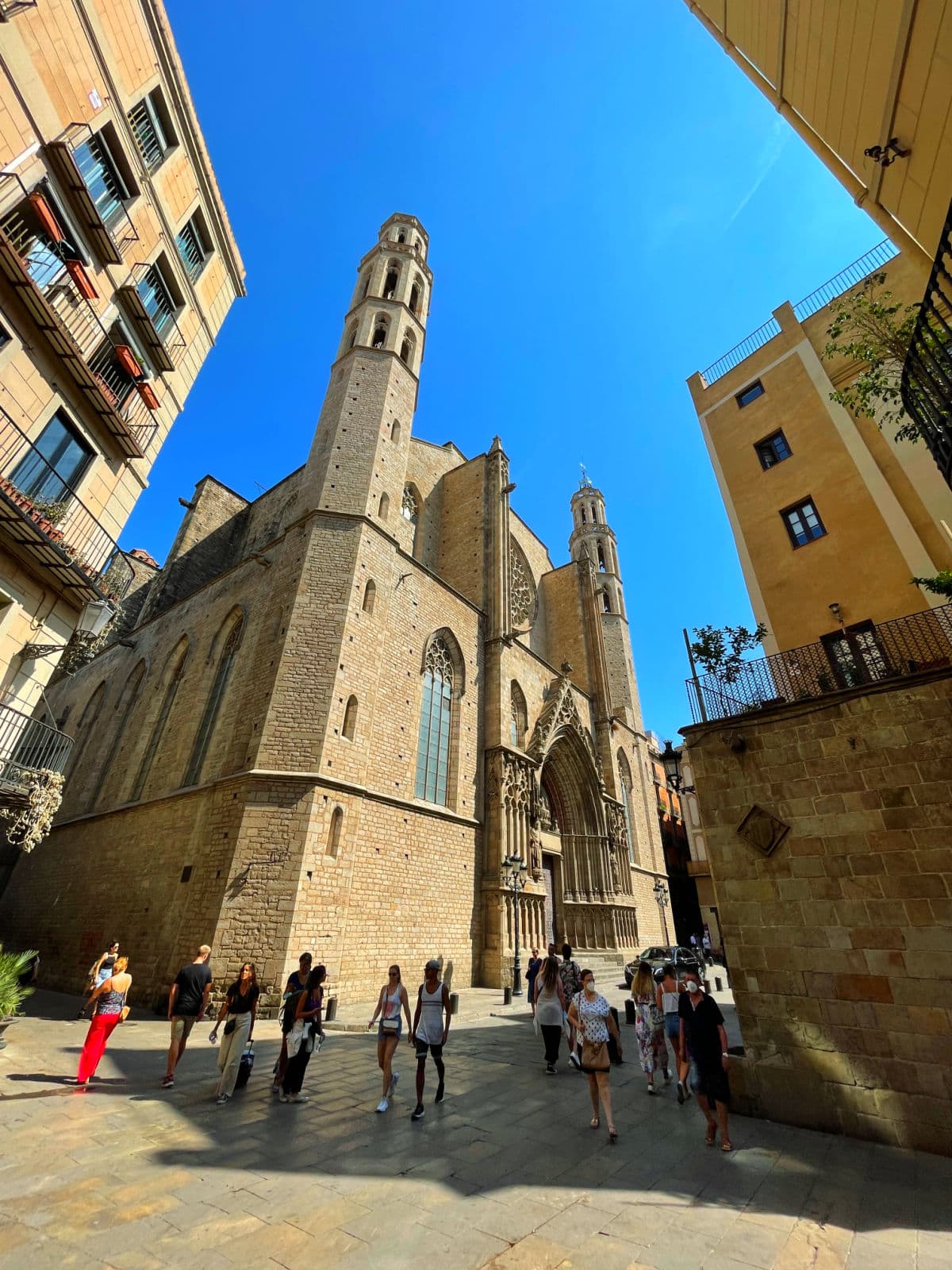
This ancient church is located in Barcelona’s Ribera District at Plaḉa de Santa Maria, 1, 08003. Visiting hours are between 10 a.m. and 8:30 p.m., and entry is free after 5:30, with the exception of the rooftop. You can also request a guided tour for a small fee.
Casa Vicens
Casa Vicens is a building in Gràcia, Barcelona, constructed between 1883 and 1885 by Antonia Gaudí for Manel Vicens i Montaner, a stock market dealer and broker. Today, it is a museum that signifies the beginning of Gaudi’s architectural career.
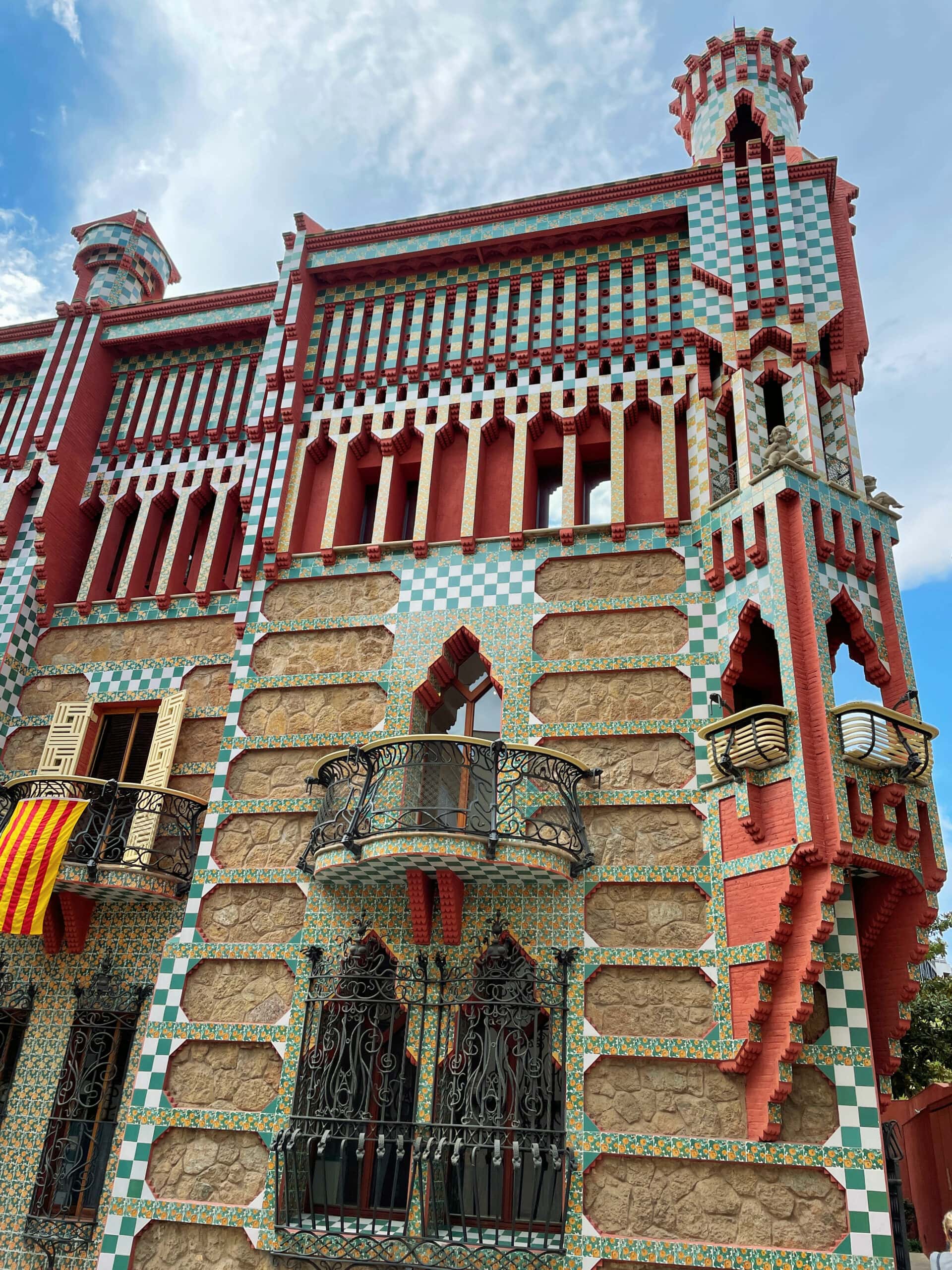
The building has countless amazing features, such as ornamental ceramic tiles, artistic ironwork, magnificent paintings, mural decorations, and masterful carpentry. The house is designed to allow natural elements (such as representations of palm leaves and carnations) to seep inside, creating a beautiful flow between exterior and interior spaces.
Casa Vicens is open to all— see the famous works of Gaudí by visiting the museum at Carrer de les Carolines, 20-26, 08012, every day from 10 a.m. to 8 p.m. for a guided tour of the house. (Note that hours may vary during the months of November thru March).
Betlem Church
The Church of Mare de Déu de Betlem is an ancient catholic church located in the center of Barcelona, right next to Las Ramblas. The original church was built in 1553, but construction on the Betlem church did not begin until around 1700, and the interior wasn’t finished until 1855.
Although the building’s interior was destroyed in a fire during the 1936 Civil War, the gorgeous facade remains for all to enjoy. It is one prime example of the Baroque architectural style, which is one of many classic styles you’ll see throughout Spain.
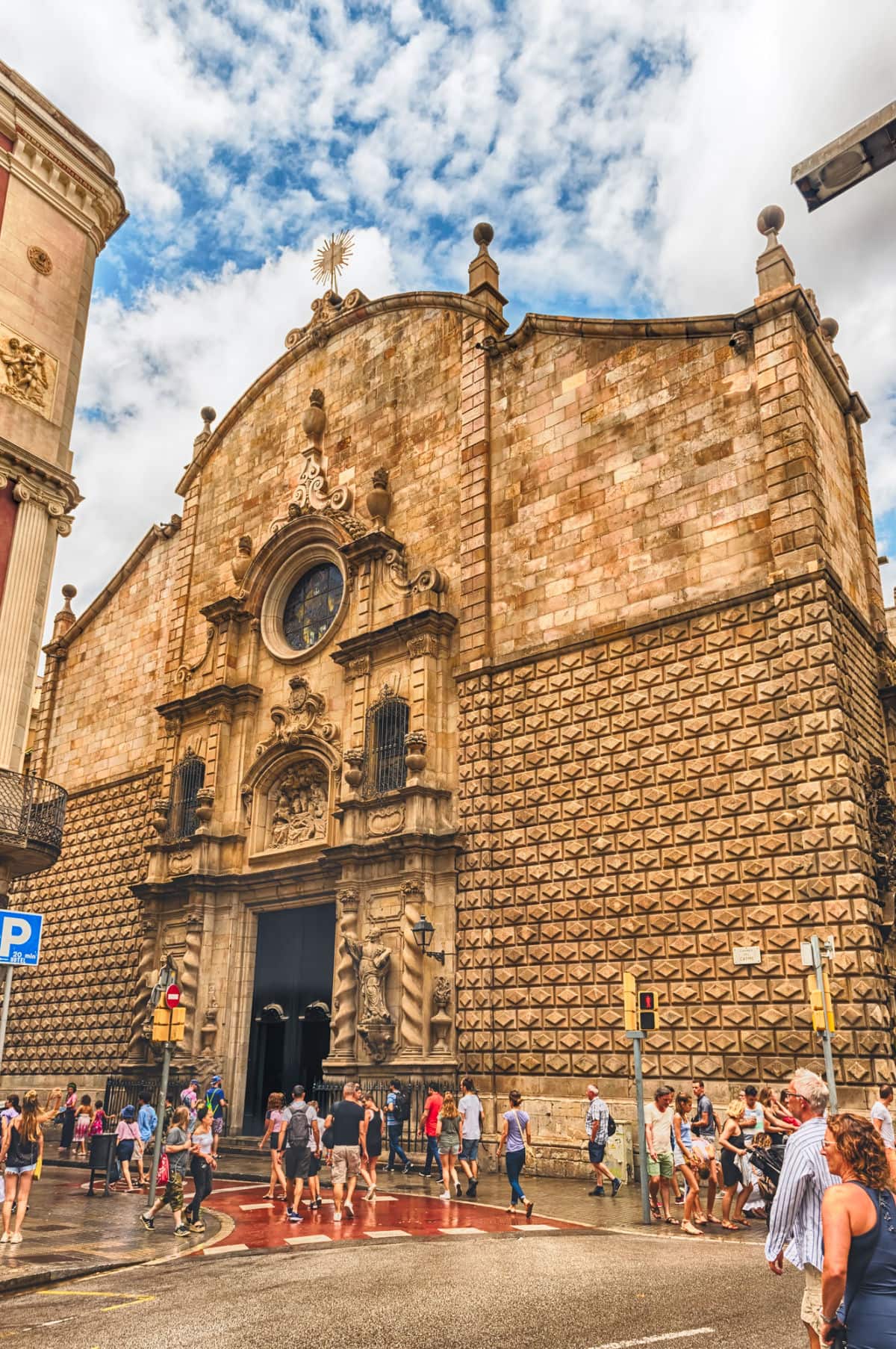
When you visit Barcelona, ensure that you see this famous landmark at 2, 08001, Carrer del Carme. The Betlem Church is open every day from 9 a.m. (10 a.m. on weekends) until 2 p.m., and then again from 5 p.m. to 8 p.m. You can also visit their official website to learn more about the history and organization of the church.
Castell dels Tres Dragons
Castell dels Tres Dragons (or Castle of the Three Dragons) is a magnificent modernist building, designed by architect Lluis Domènech i Montaner in 1888 for the Barcelona Universal Exposition. The walls of this castle are made of brick and iron, with a unique modern Catalan style.
Originally, the Castell dels Tres Dragons was a cafe-restaurant. But in the present day, the building hosts the Zoology Museum of Barcelona and is a major tourist attraction site. If you visit Ciutadella Park, ensure that you drop by Castell dels Tres Dragons at 08003, Passeig de Picasso, to learn more about the history of the Catalonians.
La Pedrera (photo)
La Pedrera, officially known as Casa Milà or The Stone Quarry, is a gorgeous Modernist-style building in Barcelona. Designed and constructed by Antoni Gaudi from 1906 to 1912, this unique building was commissioned by Roser Segimo and Pere Milà as the new home for the Milà family.
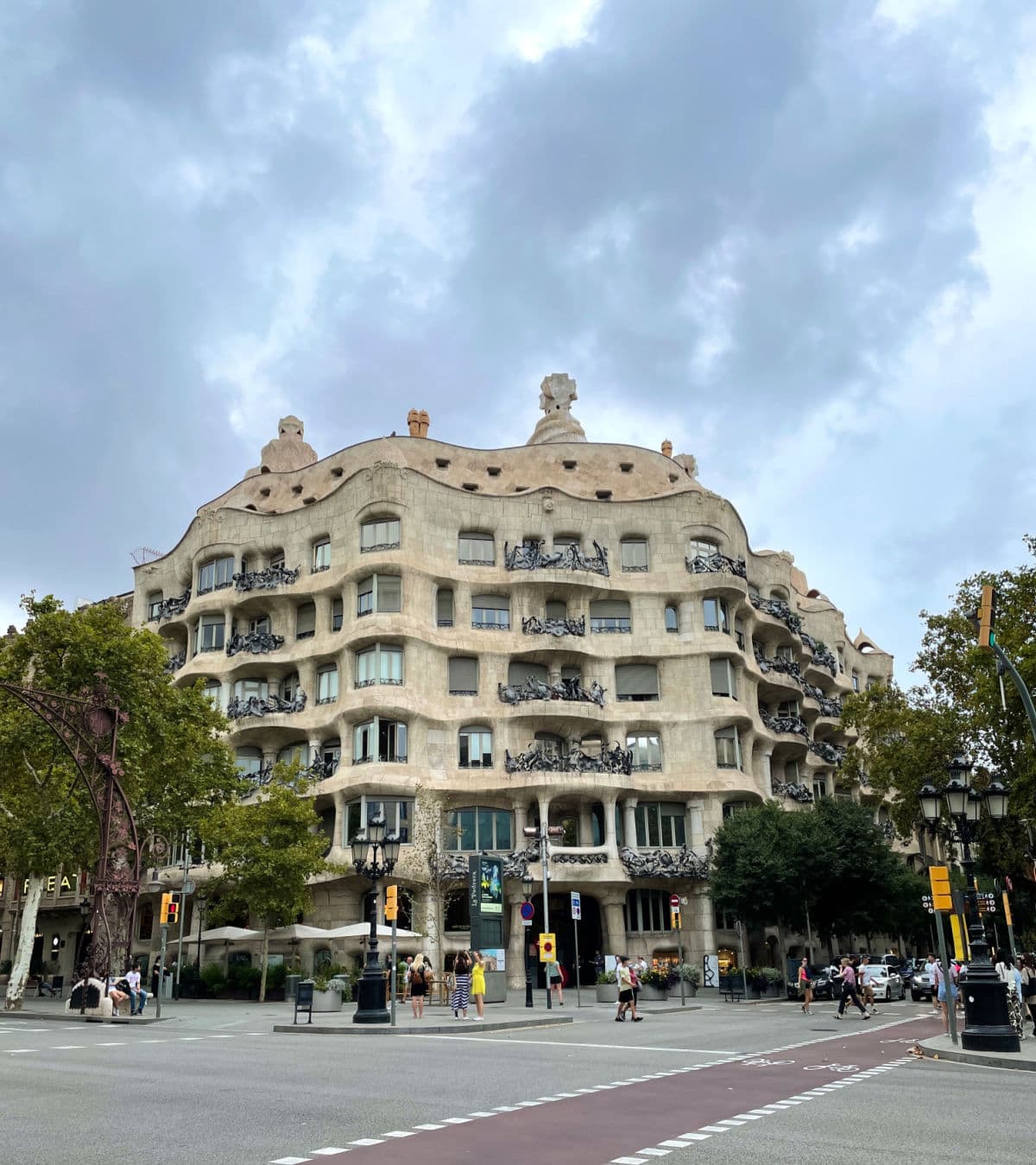
It is regarded as Gaudi’s most significant work because of the genius functional and architectural innovation he put in place. It was the last private residence he ever designed, and its artistry stands the test of time to this day. Be sure to see the Exhibition in Art and Stone.
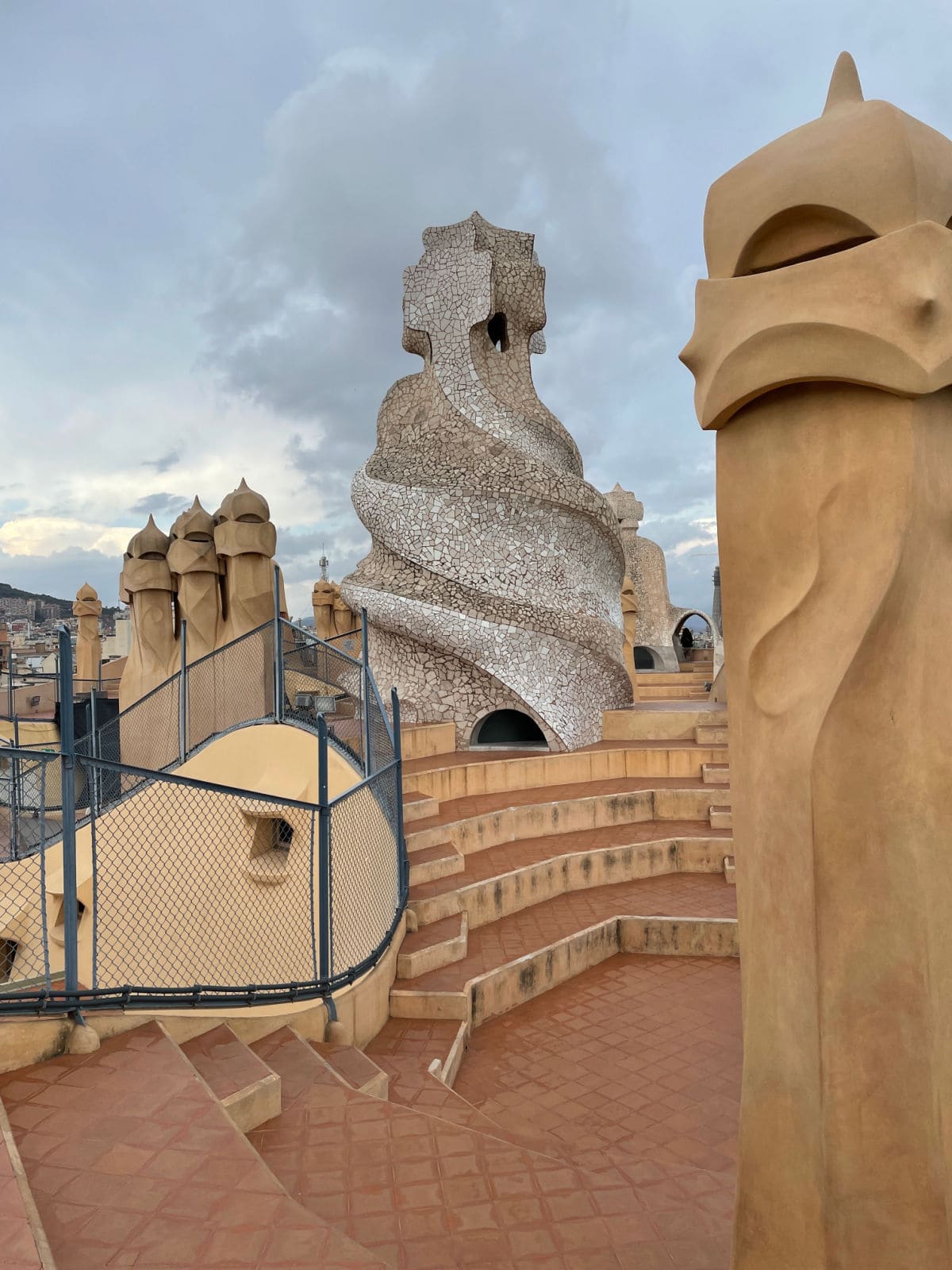
When you visit Barcelona, ensure that you visit Casa Milà at Passeig de Gràcia, 92 08008. A guided tour is recommended. Visiting hours are every day from 9 a.m. to 6:30 p.m., and again from 7 p.m. to 11 p.m. For a special treat, book the La Pedrera Night Experience.
Picasso Museum
Opened in 1963, the Museu Picasso’s extensive collection houses 4,251 works from world-renowned Pablo Picasso. It paints the historical journey of his artistic evolution from adolescence to his death. The Museum is located within five connected medieval palaces in La Ribera, making it a must-see landmark in Barcelona.
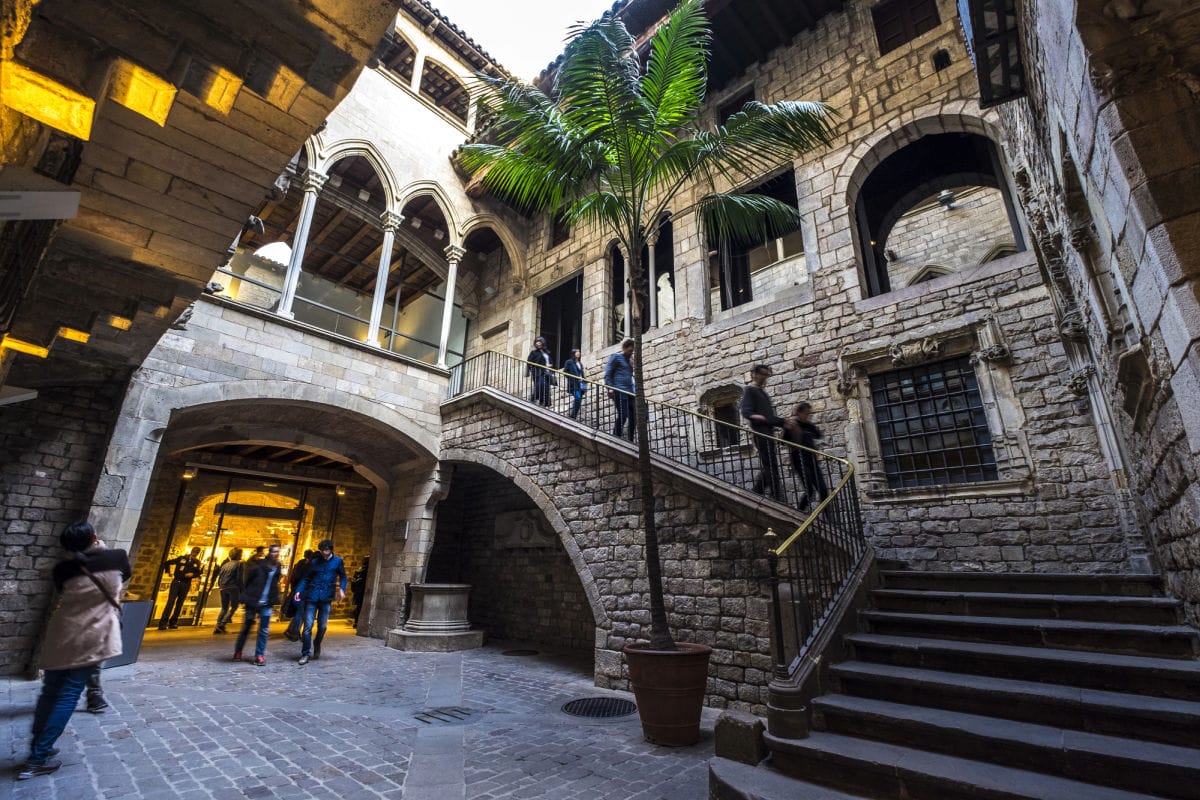
Experience the great works of Picasso by visiting the Museum, located at 15-23, 08003, Carrer de Montcada, every day except Monday from 10 a.m. to 7 p.m. Book your ticket in advance and skip the lines.
Castle of Montjuïc
Towering at an incredible height of 173 meters above the Spanish Port is the Montjuïc Castle, a now peaceful place that represents the historical struggles and repression of Barcelona. The Castle of Montjuïc was a military enclave built in 1640, during the Reapers’ War. It was used as a strategic defense station in later Spanish wars, especially in the 17th and 18th Centuries.
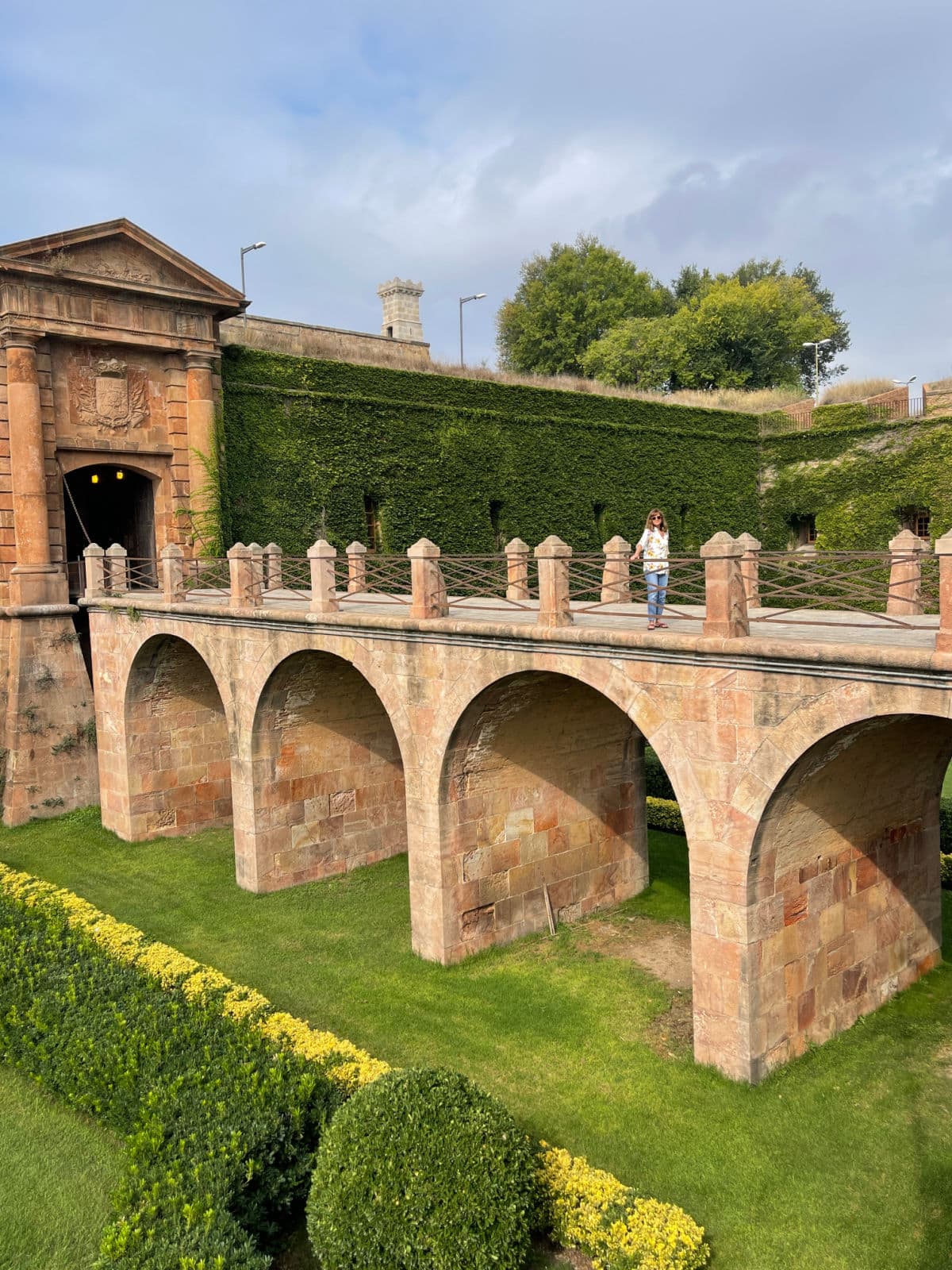
A few renovations have been completed on the castle, with the most notable one being done by Juan Cermano in the 18th Century to repair damages sustained during the war. In the present day, the castle is under the ownership of the City of Barcelona and is open to tourists.
Discover the marvelous military works and designs of the Middle Ages by visiting this castle at 66, 08038, Ctra. de Montjuïc. Visitors are allowed every day from 10 a.m. to 6 p.m. Reserve your tickets for the guided tour and cable car in advance.
The World Begins with Every Kiss
Another famous landmark in the city is the famous the World Begins with Every Kiss mural by Joan Fontcuberta. The 26-foot mural was unveiled as a temporary exhibit in 2014, as a commemoration of the 300th anniversary of Catalonia Day.
Featuring thousands of photographs that together form an image of two people kissing, each photo represents a “moment of freedom.” The mural was so beloved it has remained to this day.
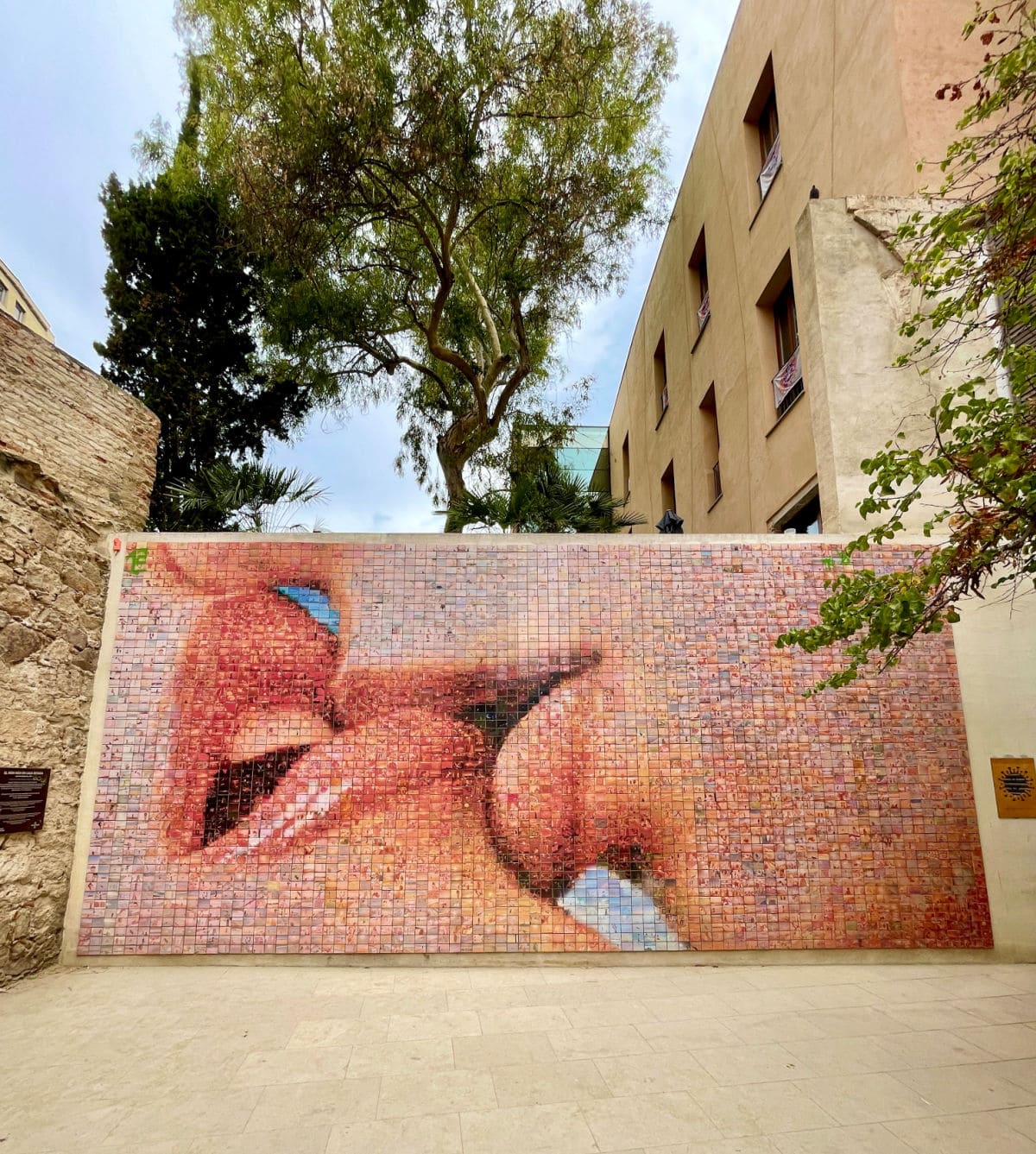
Located at Carrer de Milans, 08002, near the Barcelona Cathedral, this is an extremely popular attraction, with thousands of people visiting and taking photographs in front of it. When you visit Barcelona, be sure to stop by this gigantic work of art for a photo. It was refreshing to see people patiently waiting for their turn the day we were there.
Olympic Stadium
The Lluis Companys Olympic Stadium is a grand stadium located in Barcelona. Originally built in 1927 for the 1936 Summer Olympic Games, the stadium remained idle for over half a century after Berlin outbid Barcelona for the host position of the games.
It was not until 1989 that the stadium was finally renovated for use in the 1992 Summer Olympics and Paralympics. The stadium has a holding capacity of over 55,000 people and has played a major role in hosting both national and international sports games.
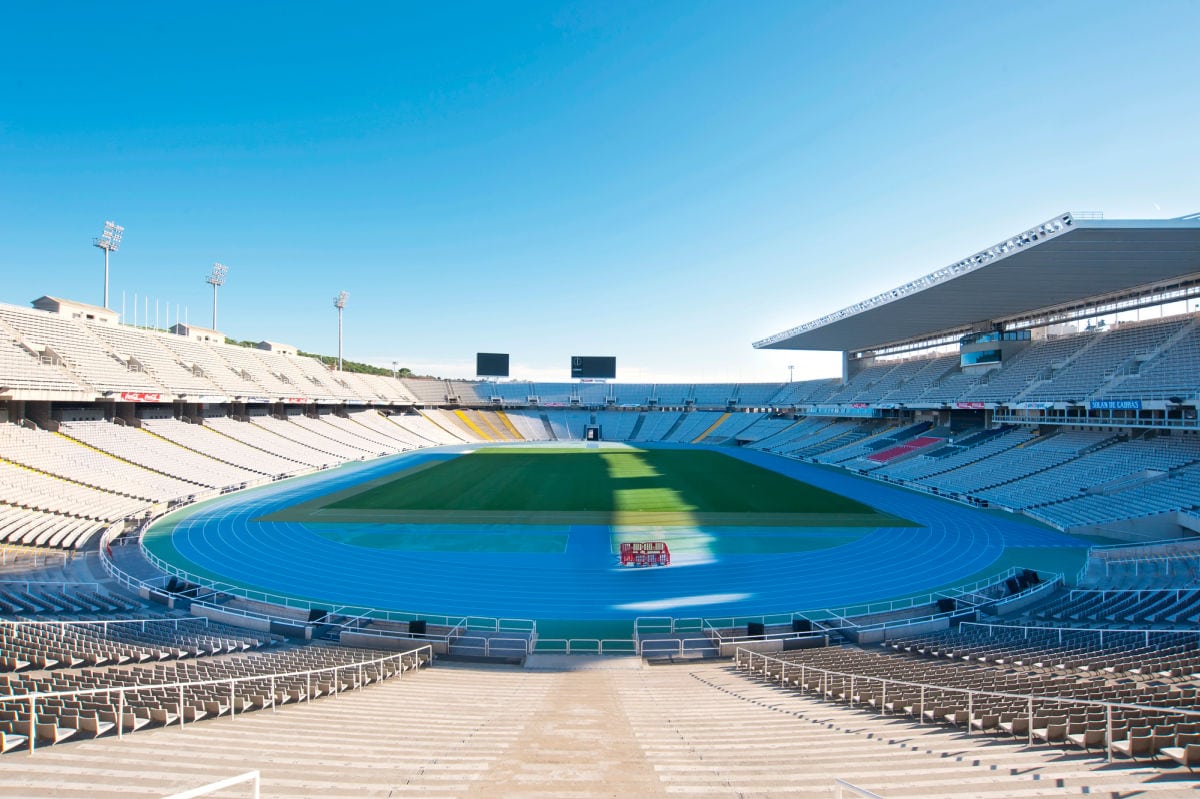
If you visit Barcelona, stop by 15-17, 08038 Passeig Olimpic, to witness the incredible architectural designs of this stadium. You can also book tickets to enter the stadium for a live game at the official website.
Ciutadella Park
If you wish to enjoy a walking tour filled with spectacular views, the Parc de la Ciutadella is the perfect place to visit in Barcelona. It’s easily one of the most iconic landmarks in the city.
Home to a stunning fountain and attractive monumental designs, it’s the perfect spot for a picnic, walk, or relaxation. You’ll also find recreational activities available such as boat rowing on the lake, visiting the Catalan Parliament, Museu de Geologia, and the nearby Zoological Museum.
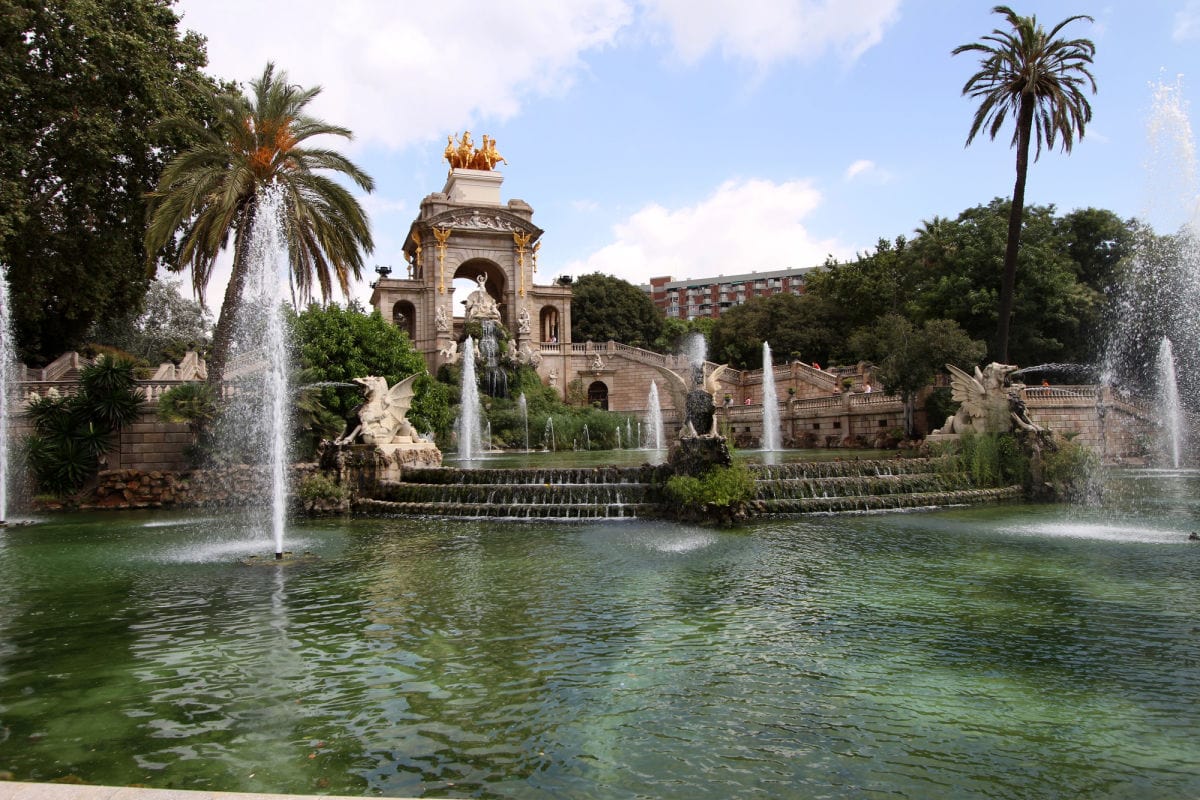
Built in the mid 19th Century, the Park was intended for public use, mainly for cultural activities and leisure. For a long time, the Park only featured green spaces, but certain features such as the Museum, Zoo, and other historical sculptures and monuments have been incorporated over the years.
You can find the Park at 21, 08003, Passeig de Picasso. The Park is open every day from 10 a.m. and closes at 10:30 p.m. (except on Tuesdays when opening times may differ), and entry is free for everyone.
Be sure to see the street art in this area, too. You’ll find truly exceptional murals here and there’s always something new to see.
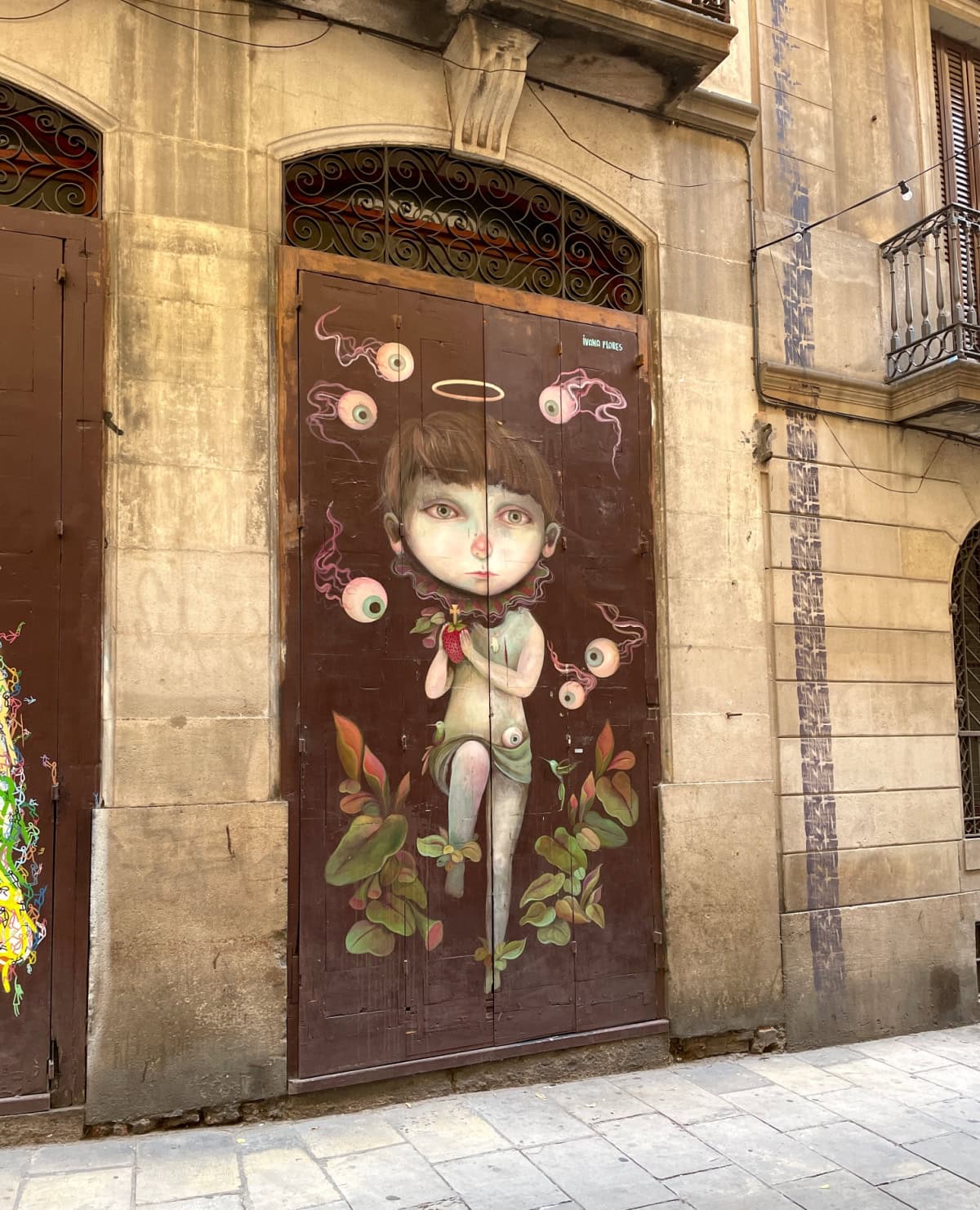
Arc de Triomf (photo)
One of the best places to visit in Barcelona is one you’ve likely heard of before: the famous Arc De Triomf. It is a classical structure both in proportion and shape, adorned with amazing finishes and decorative symbolic sculptures.
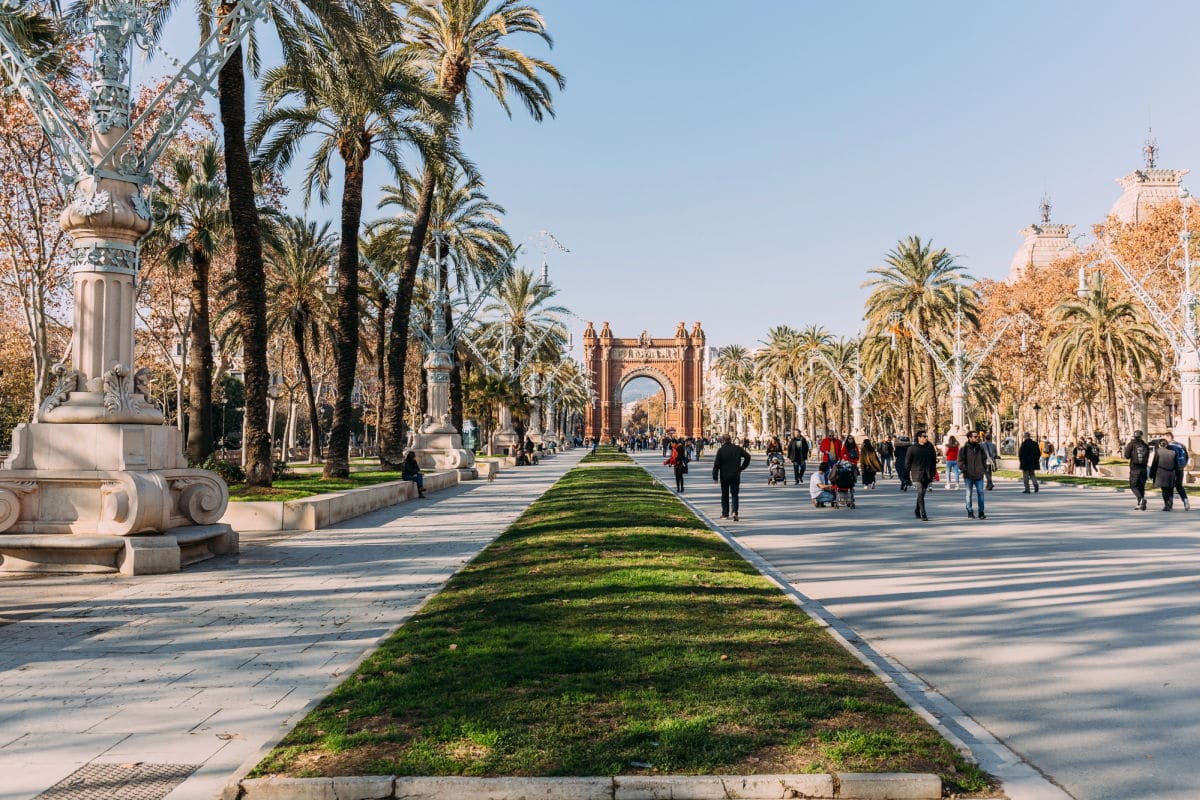
Architect Josep Vilaseca built the triumphal arch in 1888 as the gateway to the Barcelona Universal Exposition held in Parc de la Ciutadella, Barcelona. The monument opens up to a boulevard leading to the Park itself and faces the Passeig de Sant Joan.
This important landmark stands majestically above the Passeig Lluis Company, at 08003. The public park and memorial arch is open for visitors day and night, and there is no cost to visit.
Pont del Bisbe Bridge
The Bishop’s Bridge, popularly known as Pont del Bisbe, is another beautiful work of architecture in Barcelona. It was built in 1928 by Joan Rubió i Bellver, an architect and disciple of Antoni Gaudí. When tasked with remodeling the Gothic Quarter, Rubió recommended the demolition of all non-gothic structures near the Barcelona Cathedral.
However, his plan to rebuild the area was turned down, and instead, he was commissioned to construct the Pont del Bisbe.
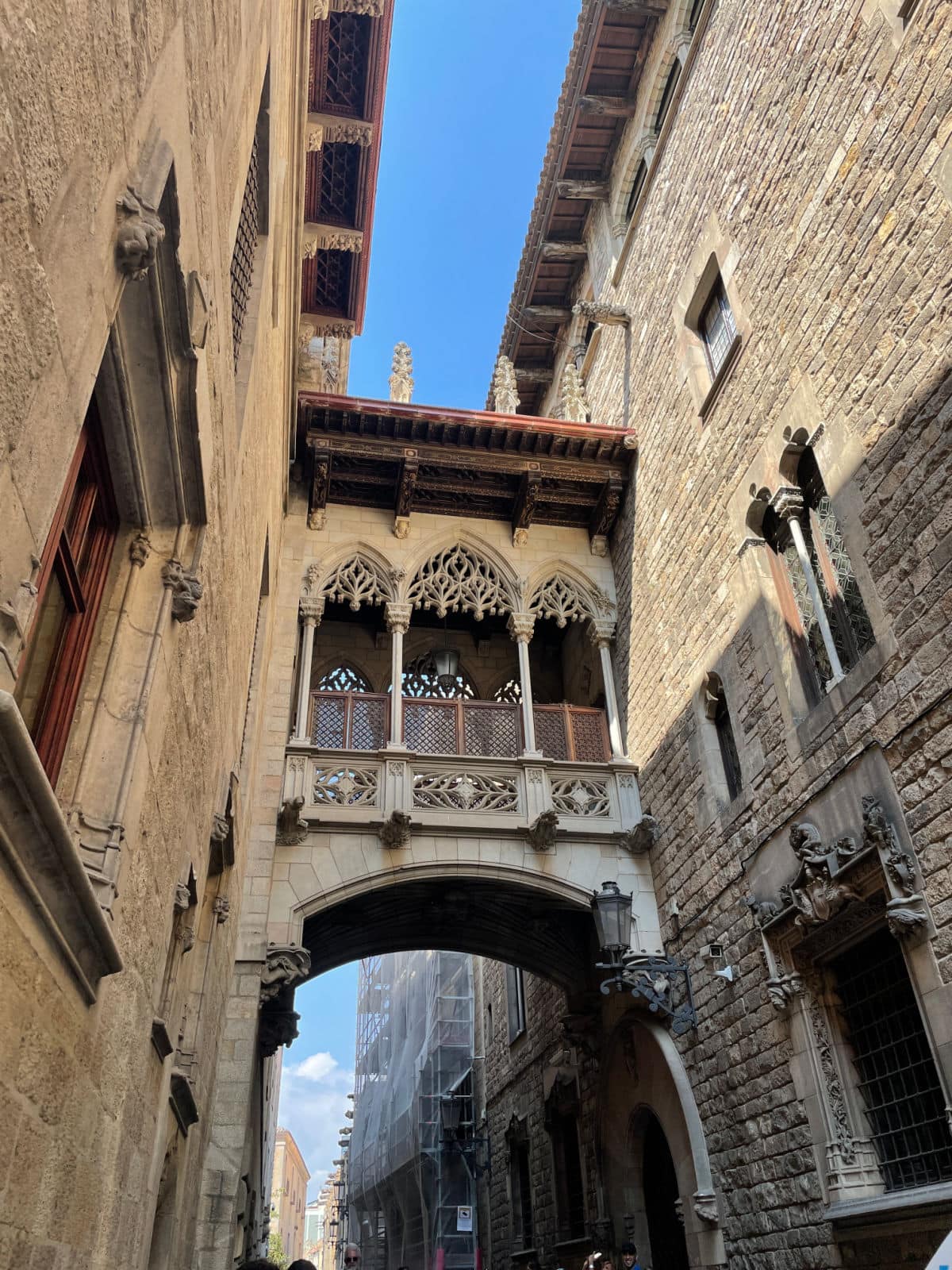
Many superstitions revolve around the bridge, and over the years, these rumors have fueled the bridge’s underpass to be among the most photographed landmarks in the city. Explore the scenic view and urban legends surrounding this gothic bridge by visiting it at Carrer del Bisbe, Ciutat Vella, 08002.
National Art Museum of Catalonia
The Museu Nacional d’Art de Catalunya is a visual art museum found on Montjuïc hill. It is widely known for its extensive collection of Catalan and Romanesque Church paintings and artwork from the 19th and early 20th Centuries.
The Museum, located at 08038, Parc de Montjuïc, is open for visitors every day except Monday and Sunday from 10 am to 6 pm. Note that the Museum is closed on Mondays, and on Sundays it closes at 3 p.m. Book your tickets to experience the great works and art of Catalonia.
Magic Fountain
Many people end up at the National Art Museum to see the Montjuïc Magic Fountains which is down the steps just below the building. The Fountain puts on a spectacular show at night, but unfortunately, is not in operation at this time because of the drought in Barcelona.
The fountains, built for the Barcelona International Exposition in 1929, are integral to Catalan history. With 3,620 jets shooting water up to 170 feet into the air, it’s no wonder they called the fountains magic.
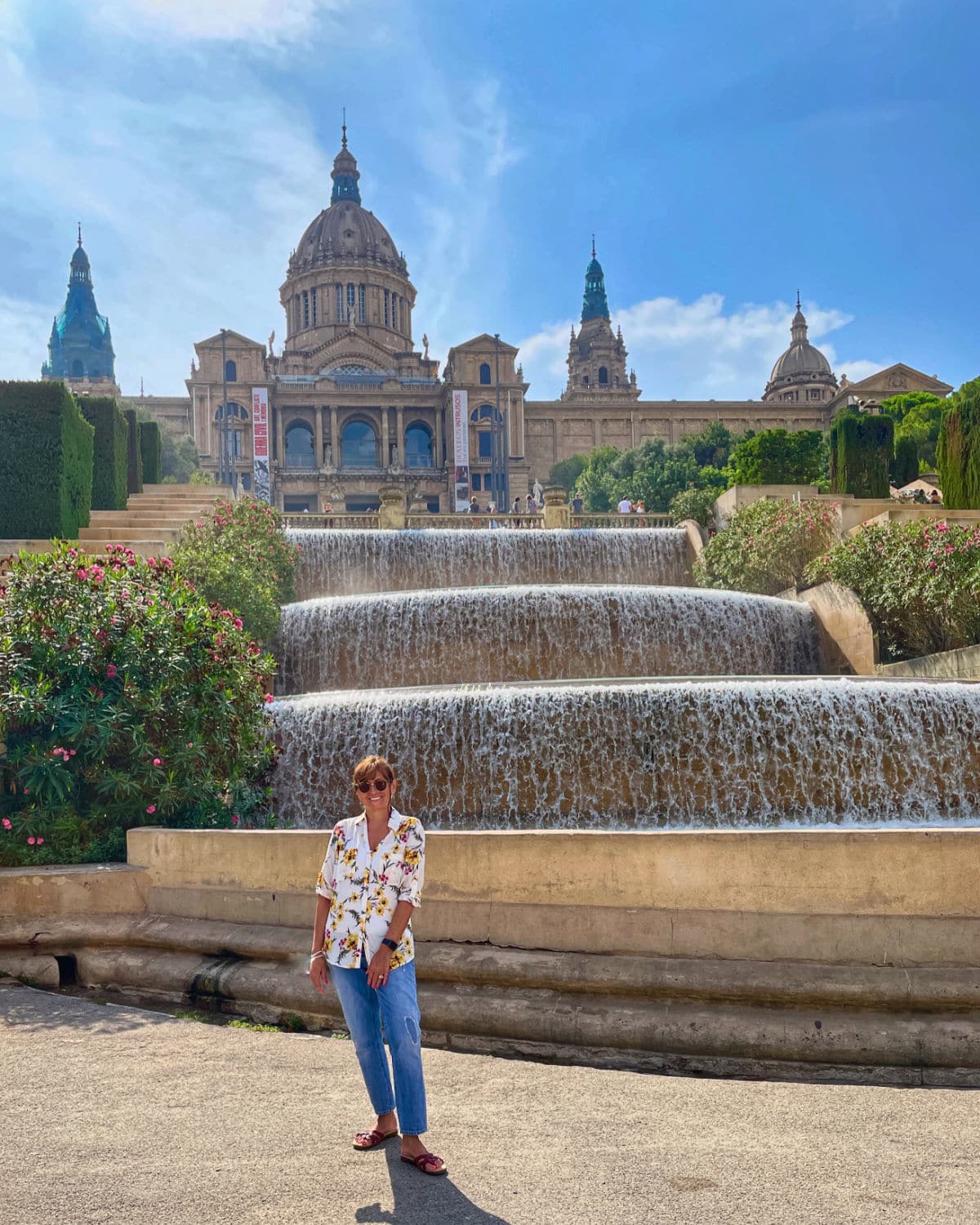
Presently, the fountain is designed for dancing choreography in sync with light and music. The free tourist attraction site, located at 1, 08038, PI. de Carles Buïgas, attracts up to 2.5 million people annually who come to see a 20-minute choreographed show of the Magic Fountain. Updated show times and information are available on their website.
Barcelona Central Post Office
Constructed in the 1920s by Gaudí’s follower, Joan Rubio, the Central Post Office bears a stone-carved façade, making it one of the most interesting sights in the Gothic quarter.
The design of the building is truly unique, merging both Noucentisme and Modern Catalan styles, and is as eye-catching as it is timeless. Once you see it, you’ll understand why it attracts tourists from all over the world.
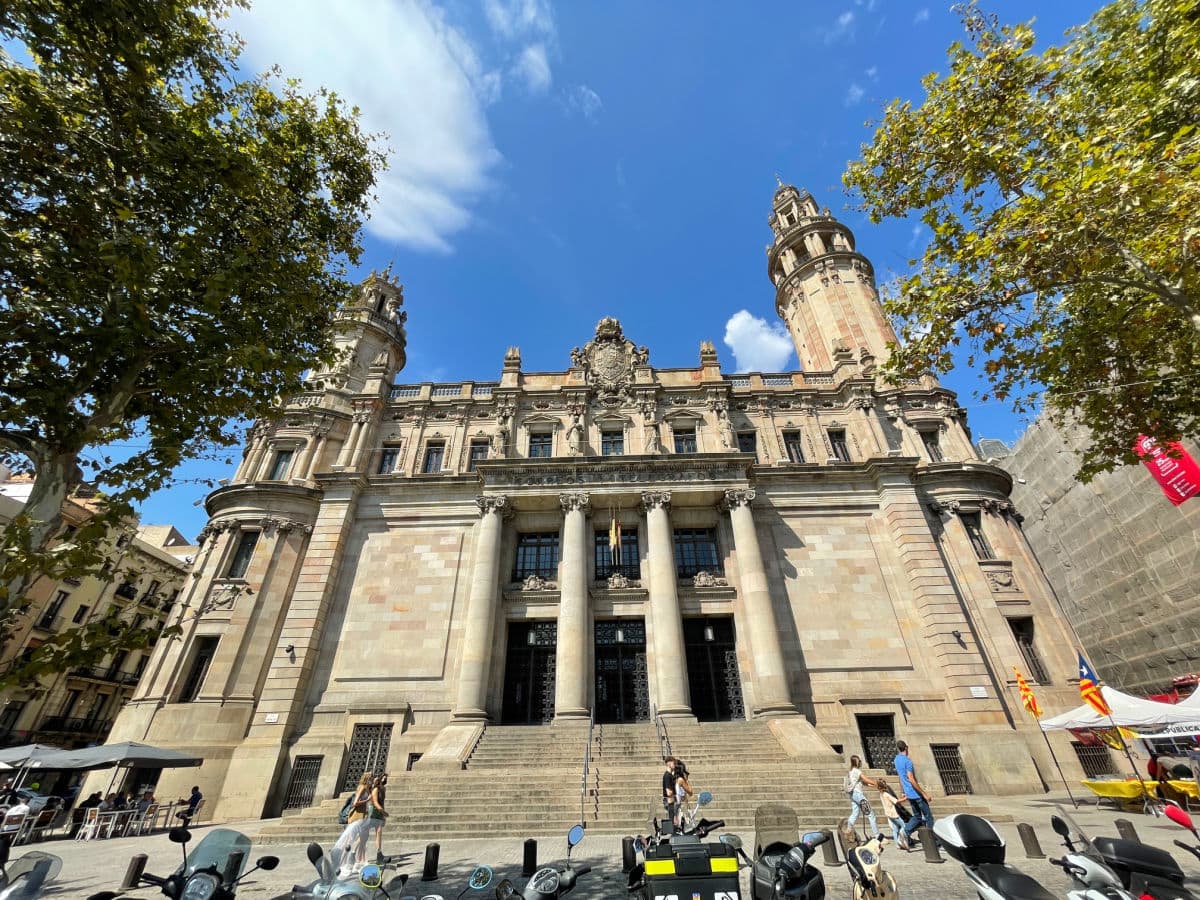
If you visit the city, ensure that you stop by the Central Post Office to send a postcard and get the chance to see one of the finest works of Rubio. The building is located in Placa d’Antonio Lopez, 08002, and is open from Monday to Friday from 8:30 am to 8:30 pm.
Where to Stay in Barcelona
I was only in Barcelona for a few days, but it was plenty of time to see so much of this spectacular city. I stayed at the Olivia Hotel, which was wonderful and very convenient to everything.
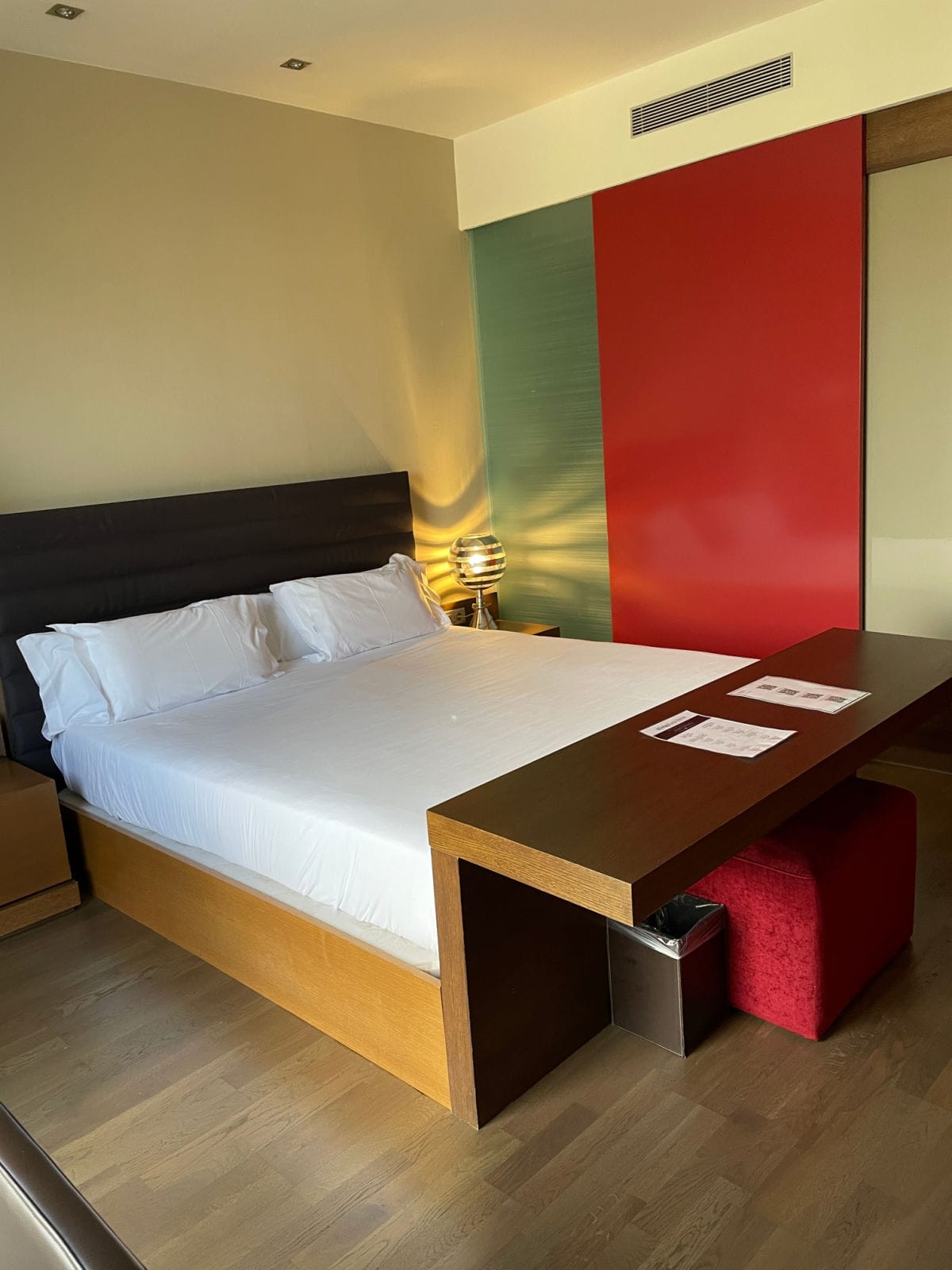
Barcelona is an absolutely amazing city to visit. It is filled with famous sights, great people, awesome foods, and iconic cultures. If you make your way to this wonderful city, make sure you check plenty of these landmarks off of your bucket list!
TIP: Visiting hours at some of these places may be subject to change throughout the year, and some buildings (especially the cathedrals) have specific times when you can enter for free. Make sure you check hours of operation before visiting, to make the most out of your time in Barcelona.
More Destinations in Europe You Must Visit
Best Places to Visit in Sicily Italy
3 Days in Rome Italy
16 Things to Do in Venice Italy in One Day
